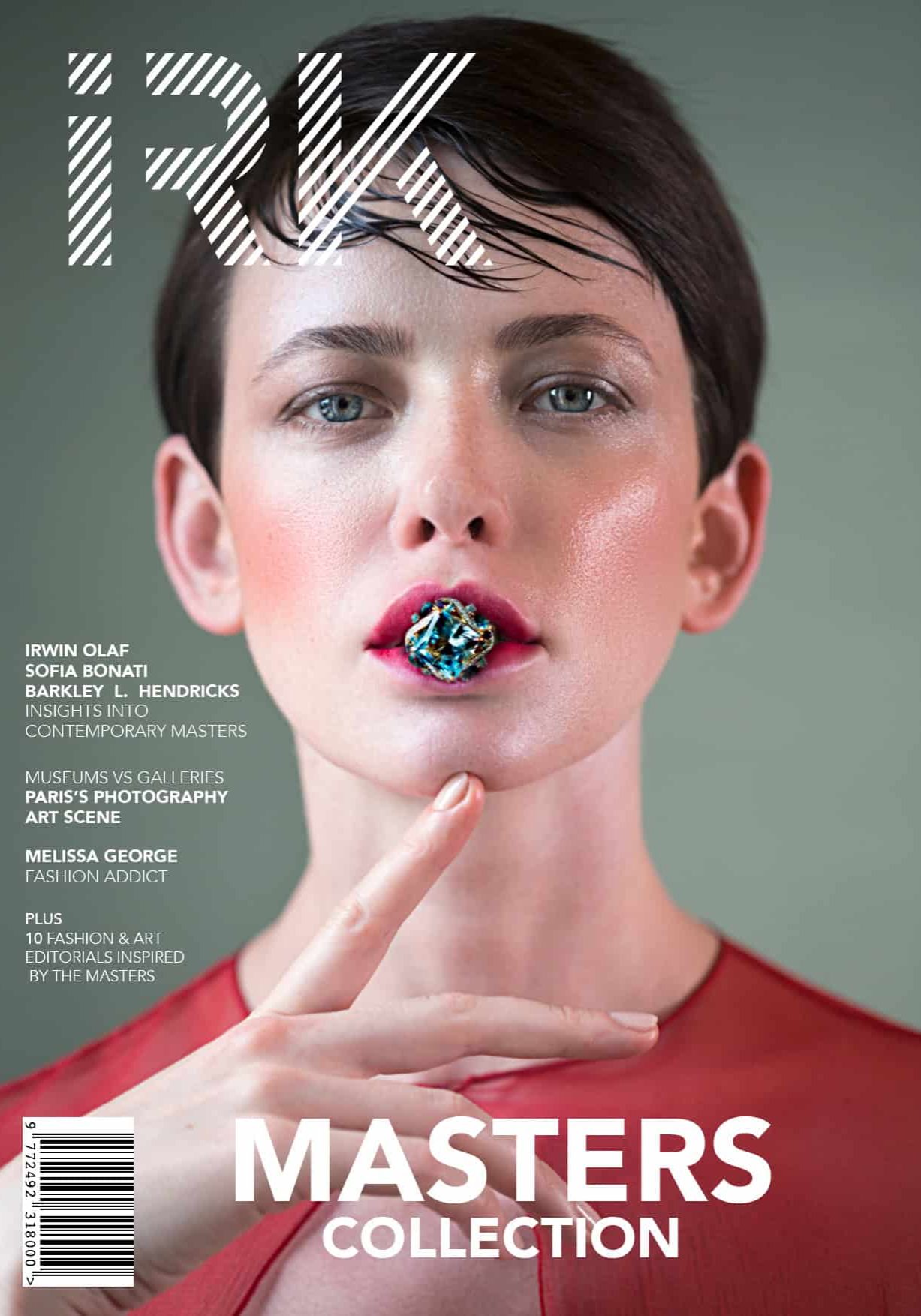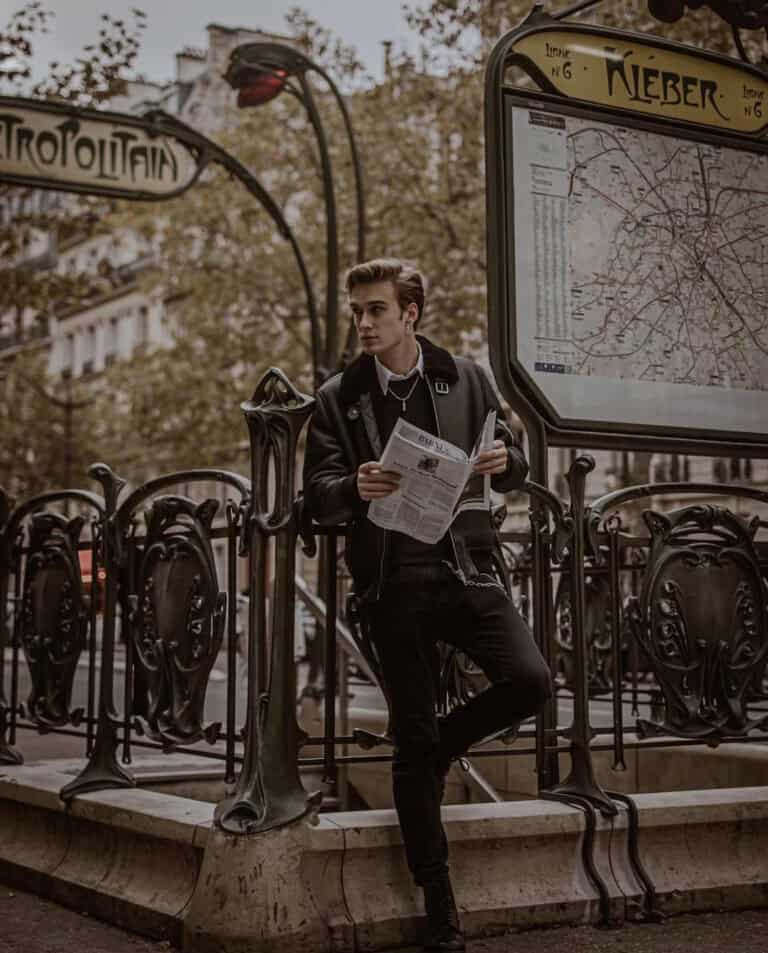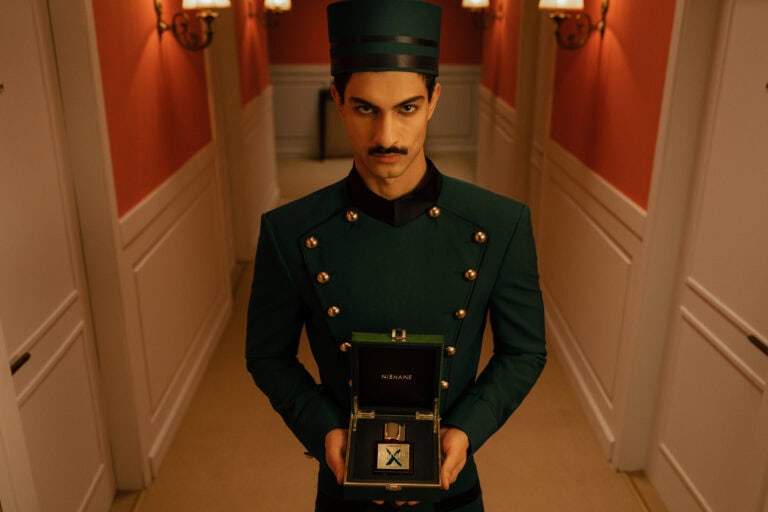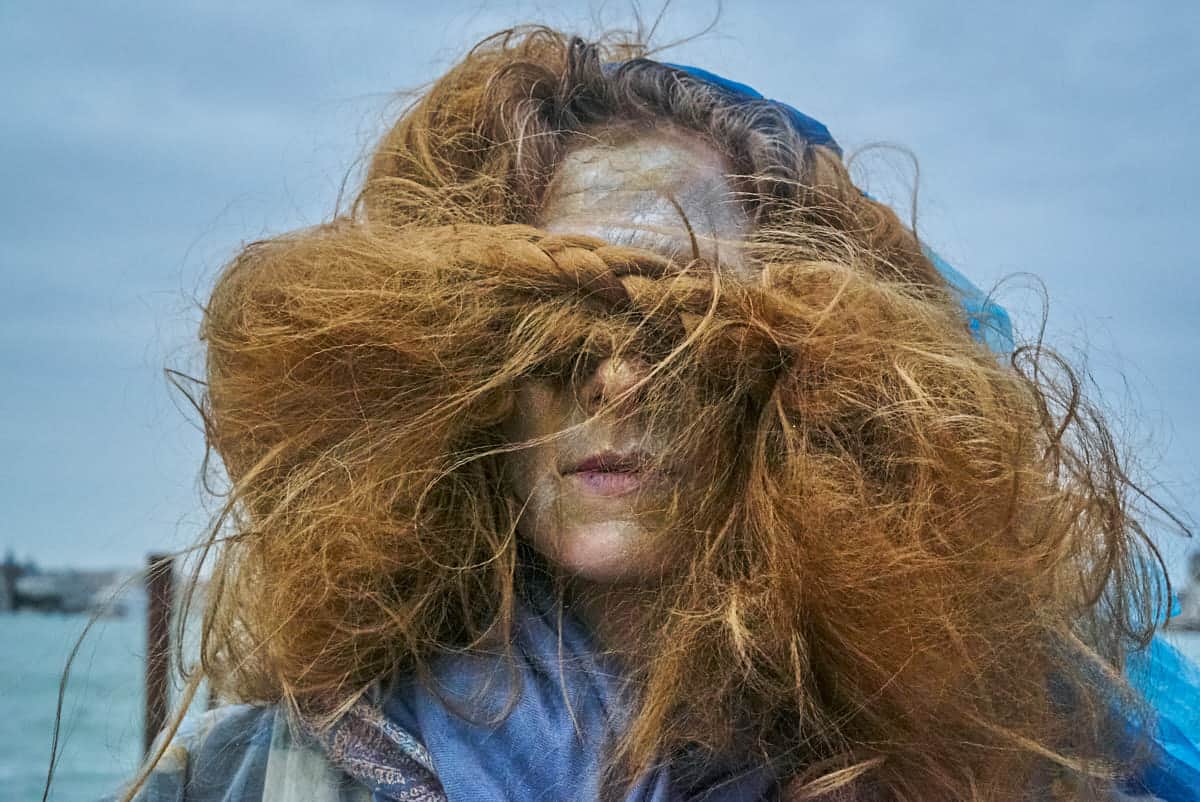
Inside Gaia by Iris Brosch
IRK Magazine
Photo and Performance by Iris Brosch
Venice Art Biennale 2019 – Washington DC Delphi Project
Gaia’s map is extending globally. Being a chthonic deity, its origin lies in the geological strata of Delphi in Greece. According to the myth, Zeus had two eagles rise from each end of the world meeting at Delphi. Henceforth Delphi was considered the center of the world indicated by the Omphalos (Greek “navel”). Gaia united with the mud left over from the world after the end of the Golden Age, gave birth to Python, a subterranean winged serpent with clairvoyant abilities that guarded the place that was later to be called Delphi. After Python’s execution Delphi was henceforth under protection the later Olympian deity Apollo.

“Inside Gaia” photographer and performance artist Iris Brosch undergoes an exploration into critical zones of our living conditions on Earth. Her ongoing project started 2019 at the Venice Biennale and most recently continued as an artist in residency in Washington, DC.
Internationally acclaimed photographer and video artist Iris Brosch weaves her feminist concept into deeply intriguing images to explore possible fields of action, play and utopia. Brosch finds inspiration in ancient myths, histories, literature and various adaptations from the text.
Iris Brosch is one of the first artists to produce performances at the Venice Biennale in 2005. Since then, she has depicted the relationship between feminism and ecology, the mystical connection between woman and nature, and shared histories of oppression based on her concept of Eco-Feminism. With delicate body language, opulent staging and sensitive scanning of the female body’s surface, Brosch encourages female empowerment and self-acceptance to overcome fear of the female body (Divinita – Birth of Black Venus – Centro Italiano per le Arti e la Cultura, 51st Venice Art Biennale, 2005.)
With Woman and Nature Near Extinction, (2013), Metamophoses de L’amour, (2017) or even earlier, In Paradisum (2003,) the artist references to elementary sources of human and non-human life where women emerge from the waters and canals of Venice. Within the framework of “Tableaux Vivants”, Brosch employs a comprehensive metaphorical language that offers allegorical gestures that are borrowed from Greek myths and their transformed versions throughout the history of literature and the arts.
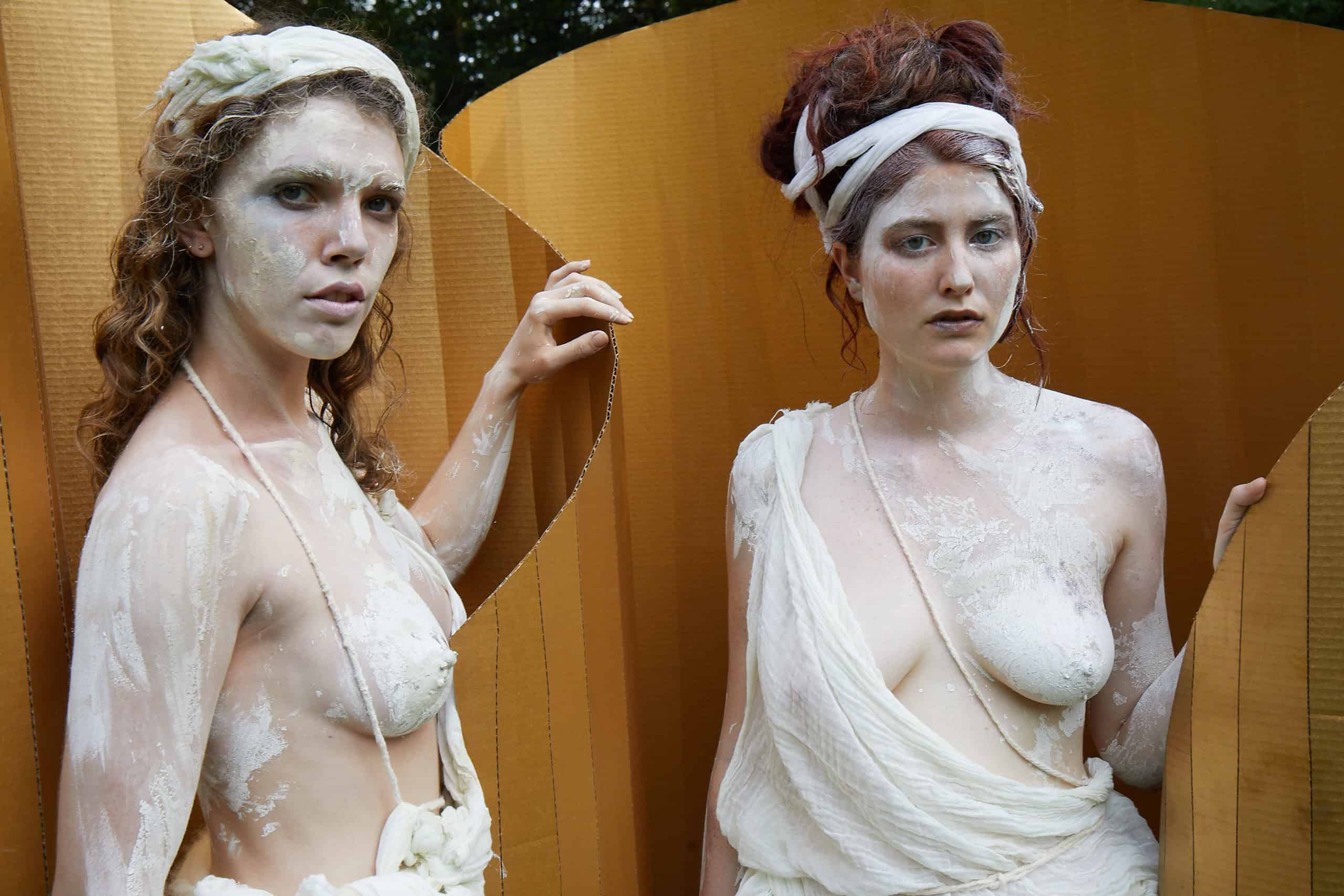
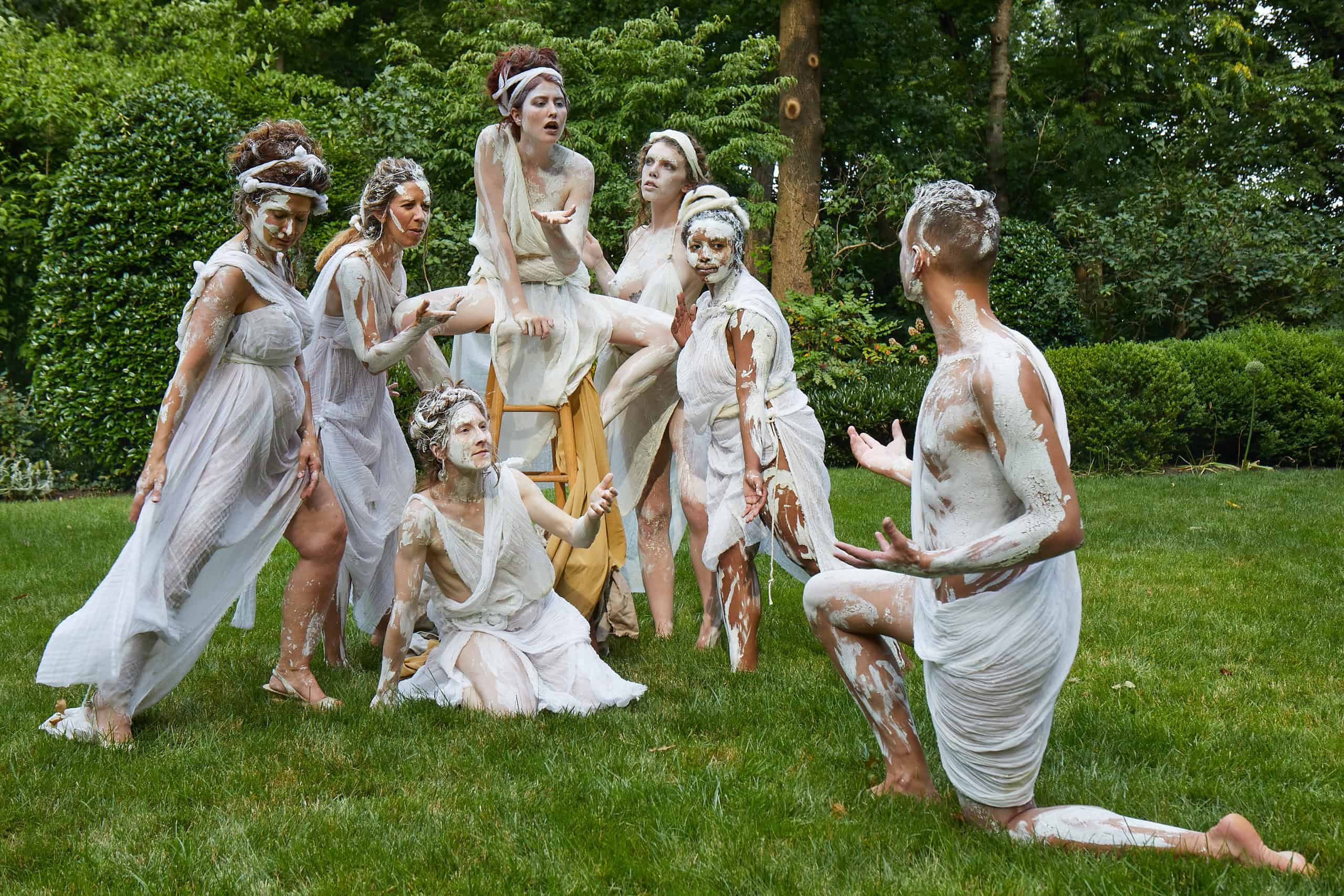
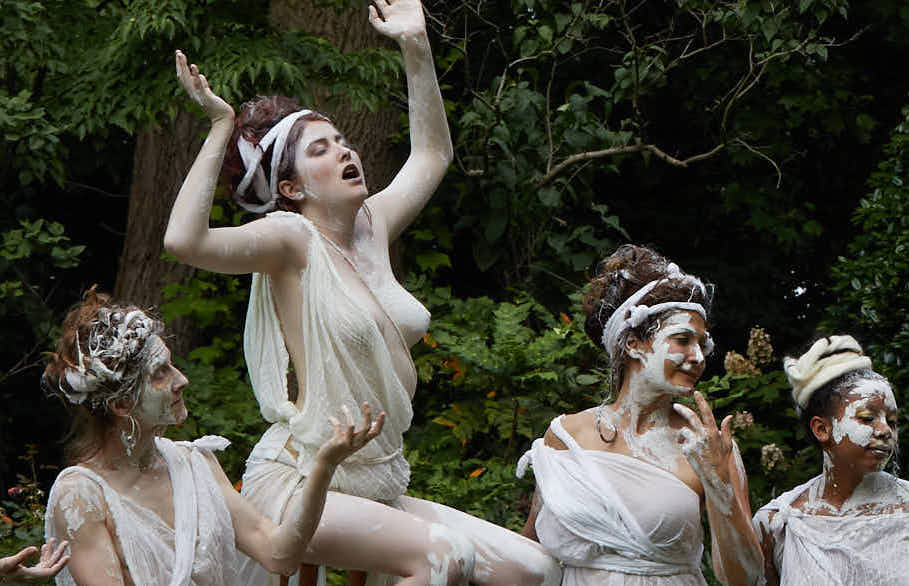
Tablaux I, II and III — Inside Gaia: inspired by Oracle of Delphi, Washington DC, USA
In her 2019 production, Brosch depicts the 58th Venice Art Biennale theme “May You Live In Interesting Times”. This suggests the urgency of environmental, political, and social instability. However, she radically goes further into experimental explorations to find Gaia not as a deity from deep times, but as entities that relate to our times of crisis where Earth and all human and non-humans are at risk through an ongoing cataclysmic event of climate change and extinction.
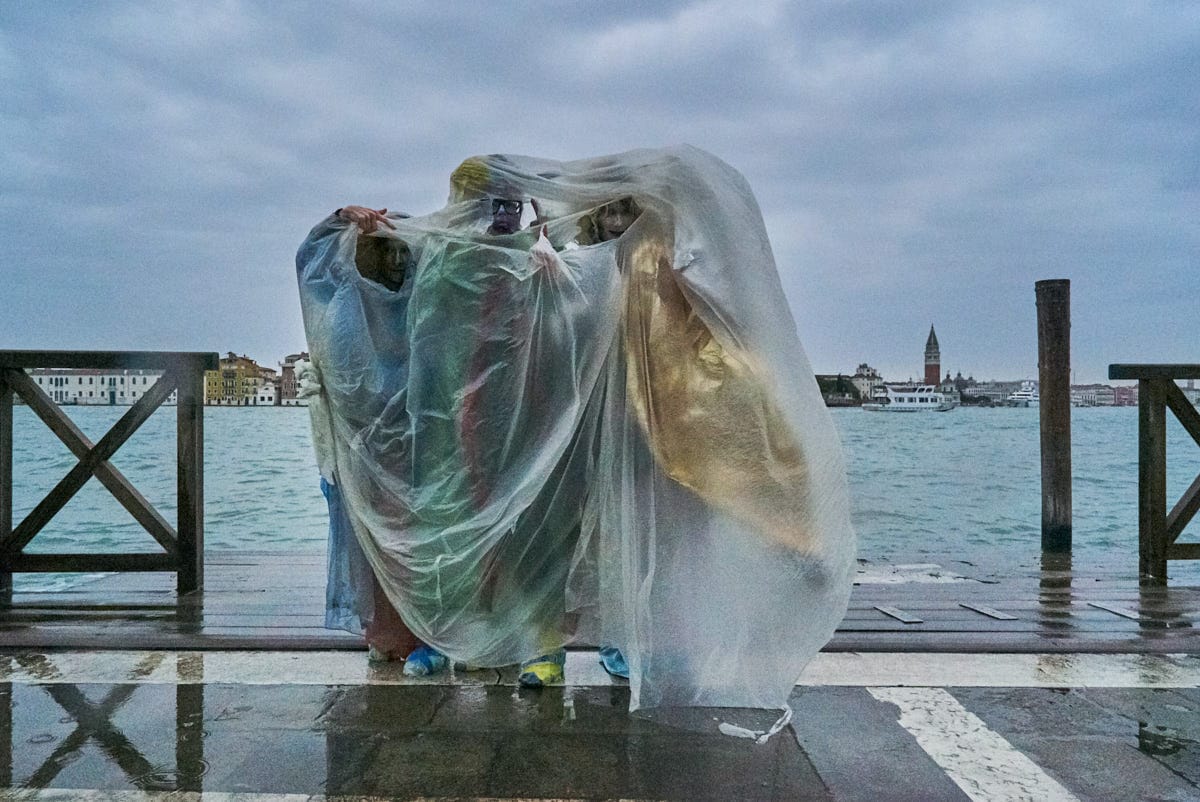
Tablaux IV- Inside Gaia: Fragile anthropocenic sphere; humans hovering inside a broken plastic sheet, Guidecca, Il Redentore, Venice, Italy
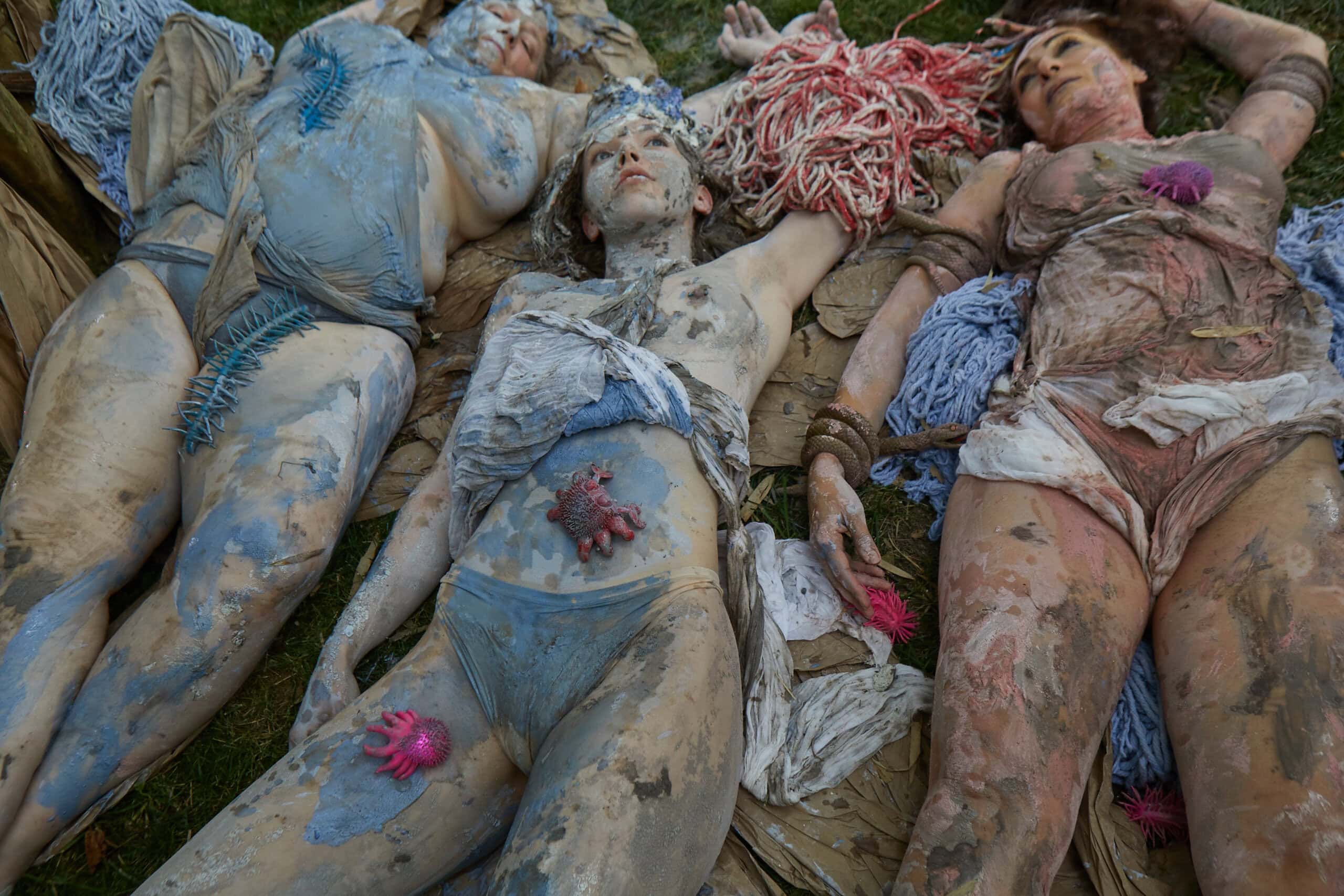
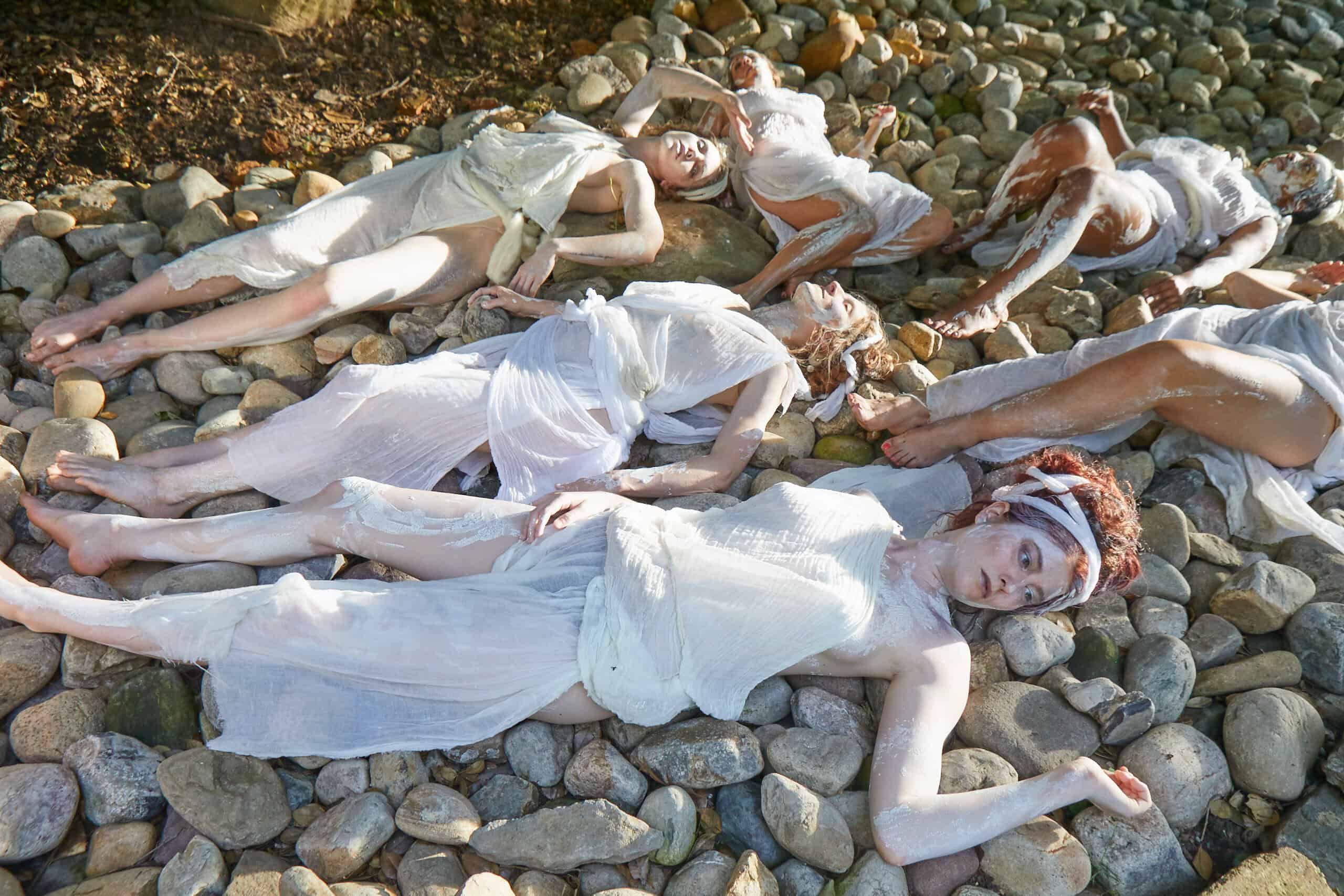
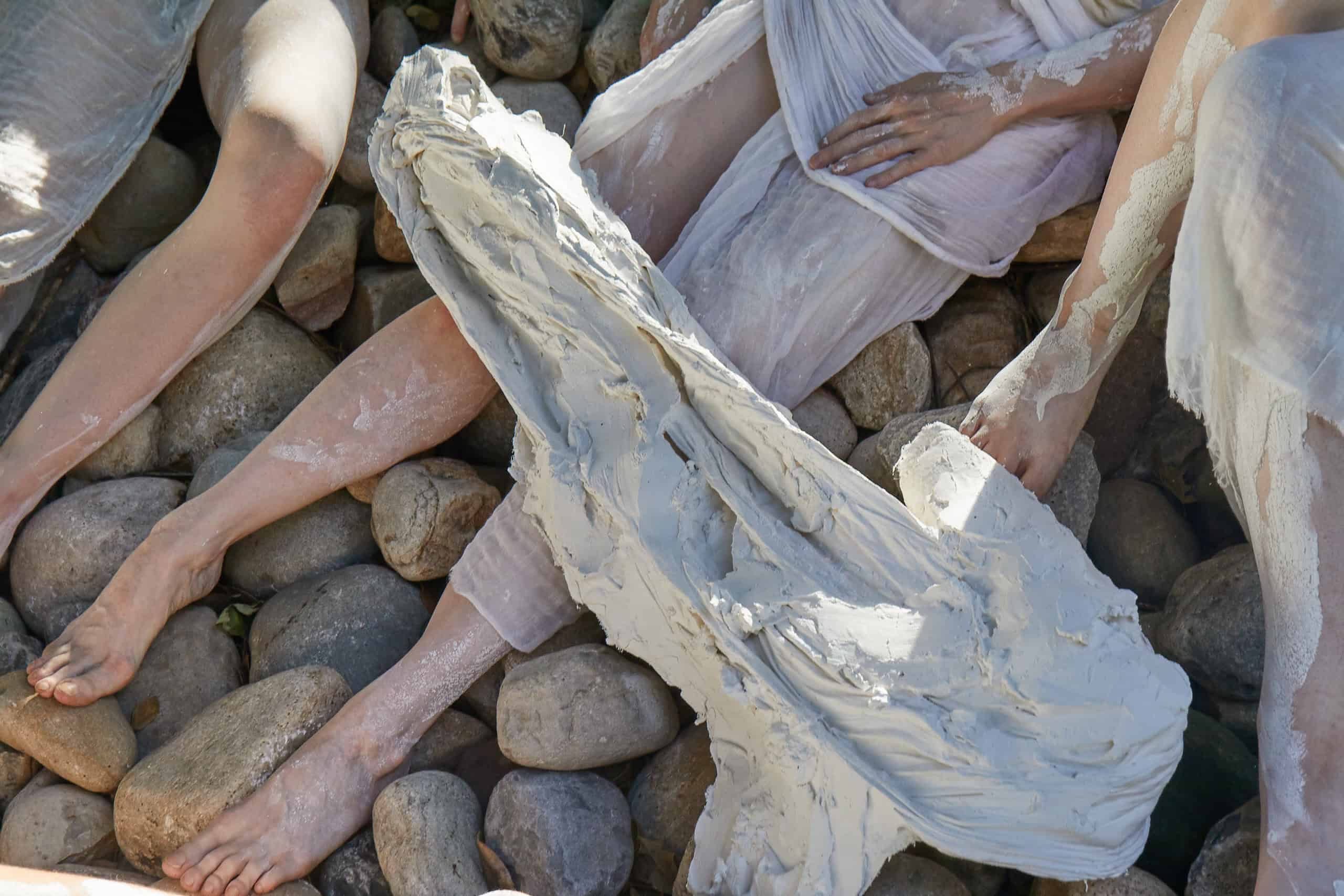
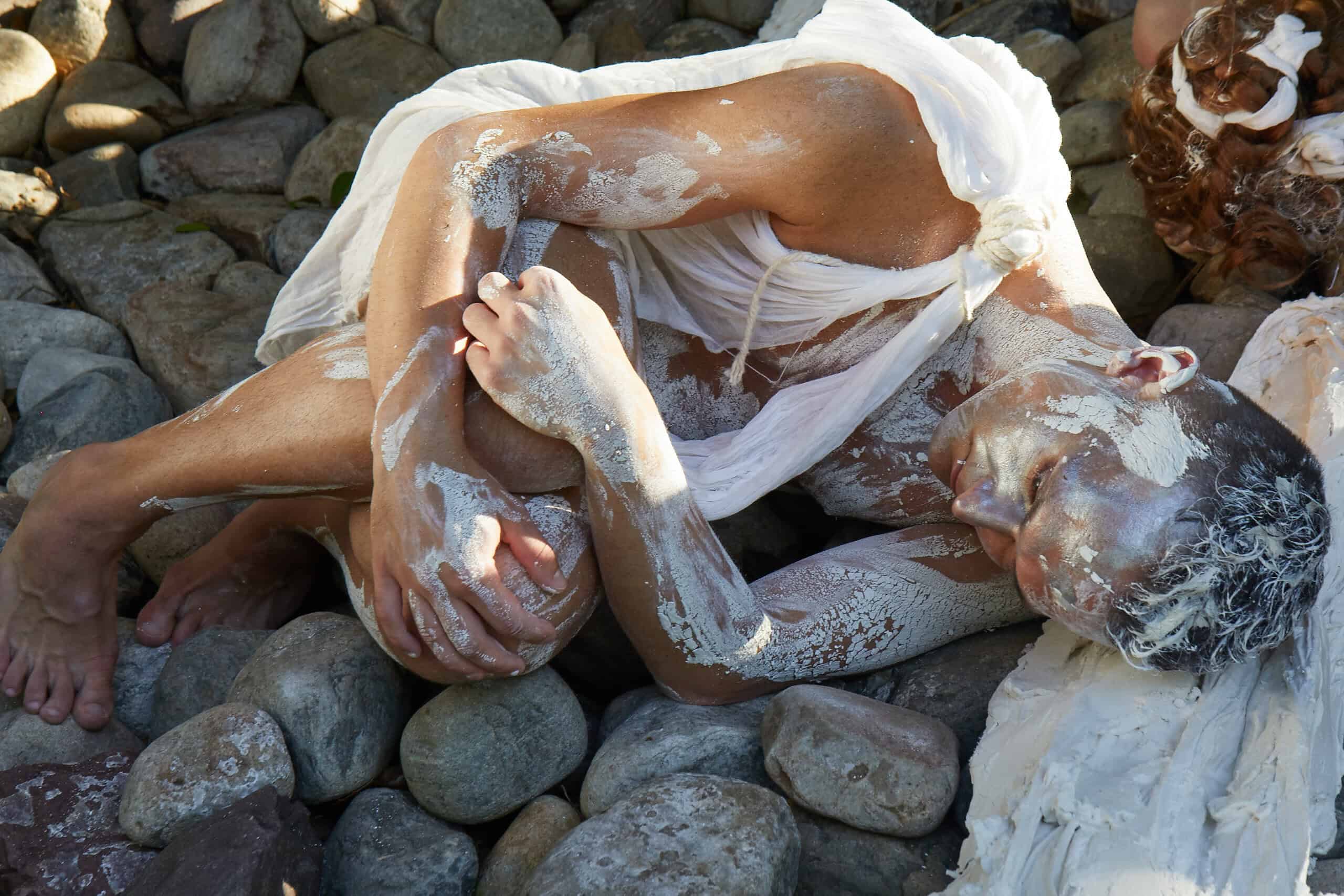
Tablaux V — Inside Gaia: Humans and critters at risk of extinction in critical zone of the Anthropocene, Washington DC, USA
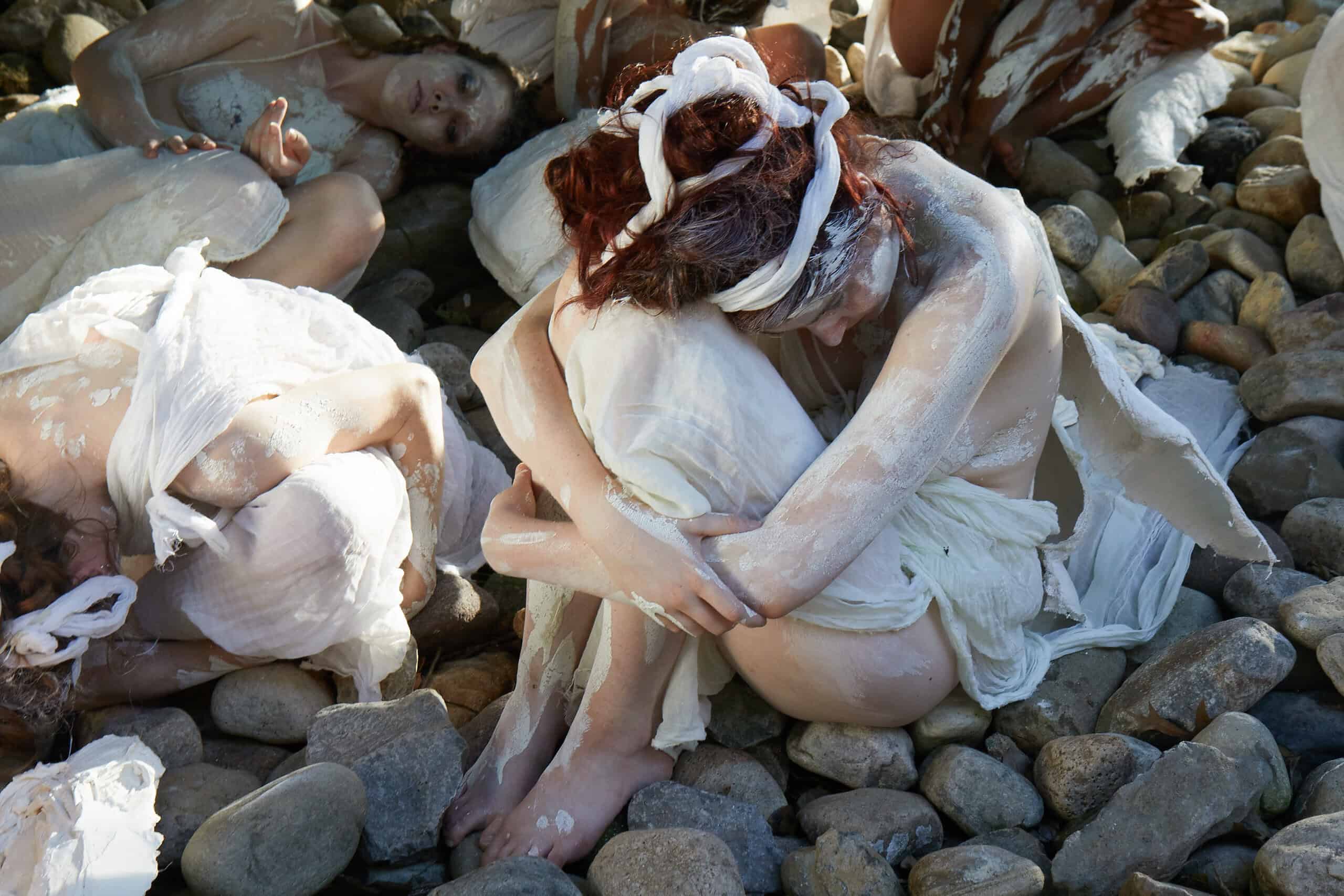
Tablaux VI — Inside Gaia: Geological strata and top human layer embedded in riverbed of time, Washington DC, USA
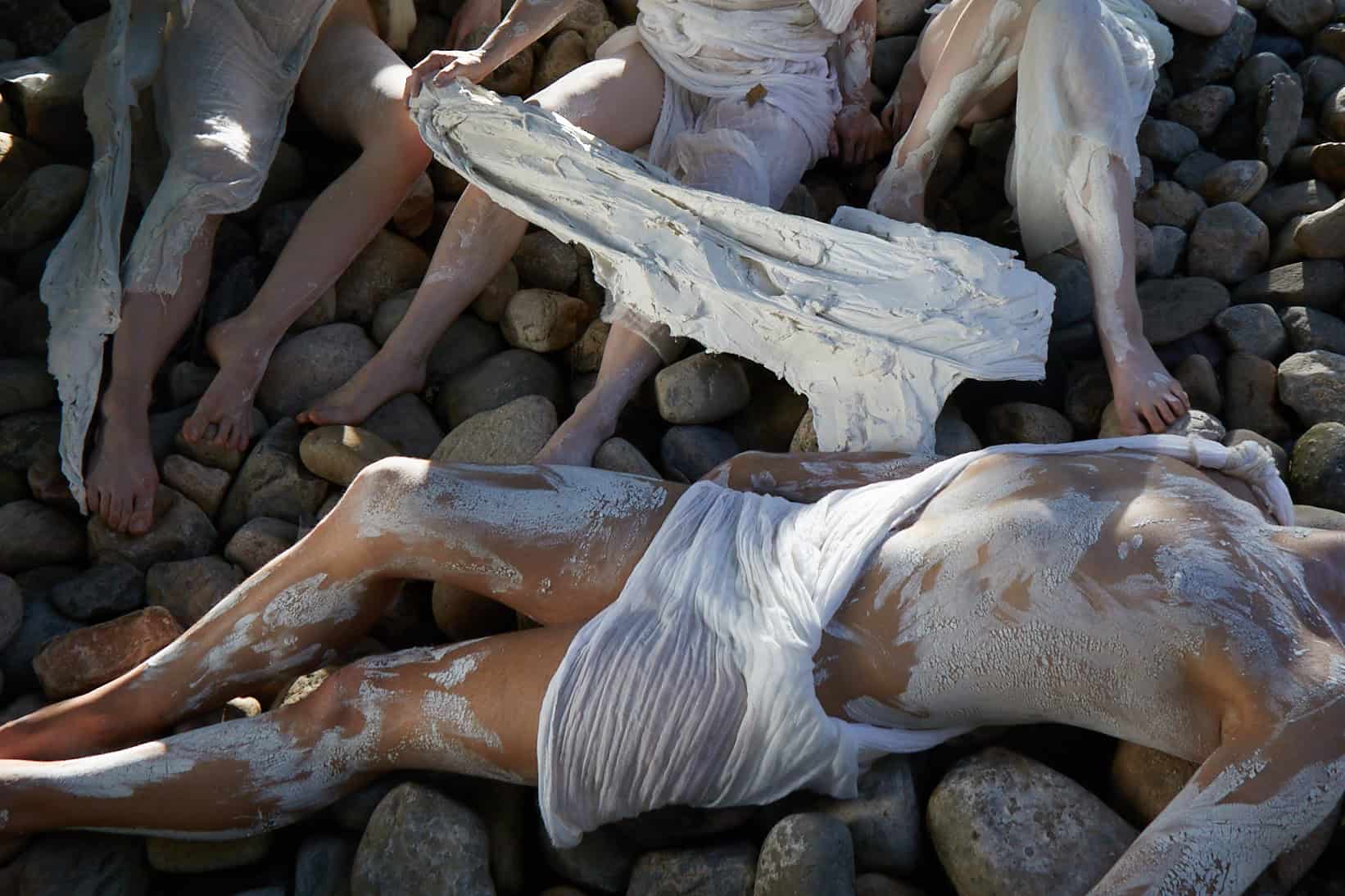
Tablaux VII — Inside Gaia: Geological strata and top human layer embedded in riverbed of time; Pars pro Toto in the relationship between body and sculpture, Washington DC, USA
During the preview week of the Venice Art Biennale 2019, Iris Brosch created an environment that offered three places to find a way “Inside Gaia”. One location was hosted by Fiora Gandolfi in her palazzo in the heart of Venice, where Gaia evolved through explorations within the enclosed eclectic environment of its historic architecture. Later she and her crew relocated to the Canale Grande across the historic Palazzo of Ca’ Corner della Regina, and finally established the third site of her performance on the island of Guidecca in cooperation with Manuel Carrion of Galleria Il Redentore.
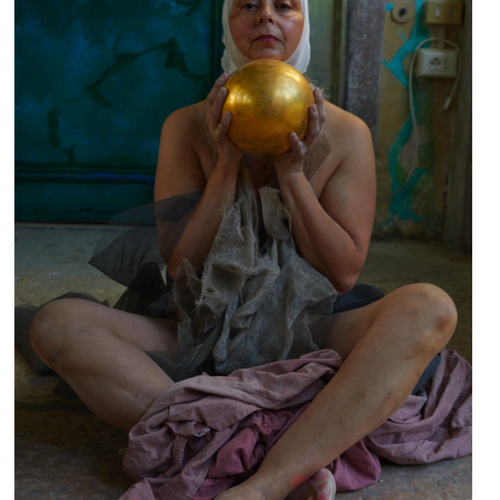
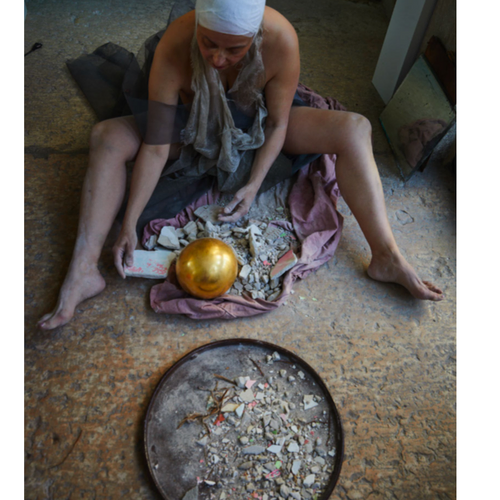
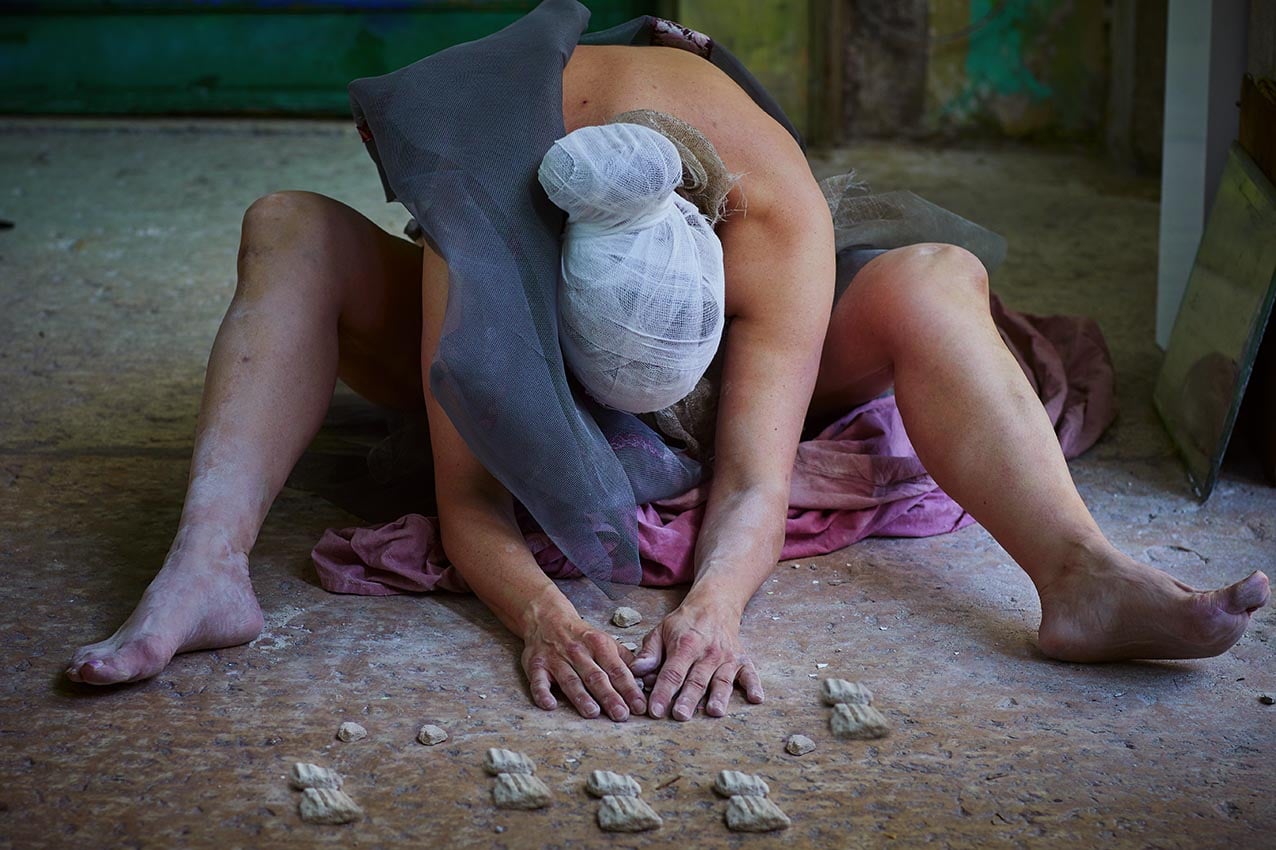
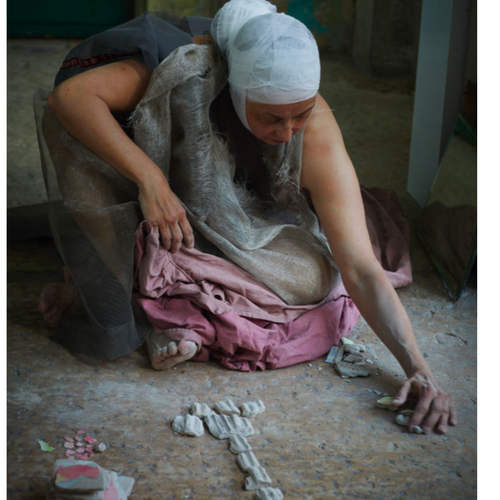
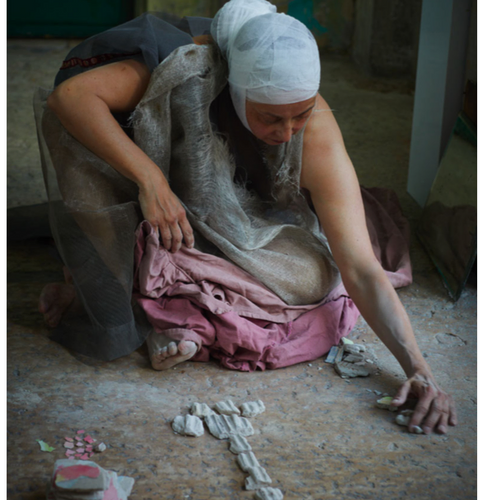
Tablaux VIII— Inside Gaia Performance: Gaia constructing Earth out of Chaos, Palazzo of Fiora Gandolfi, Venice, Italy
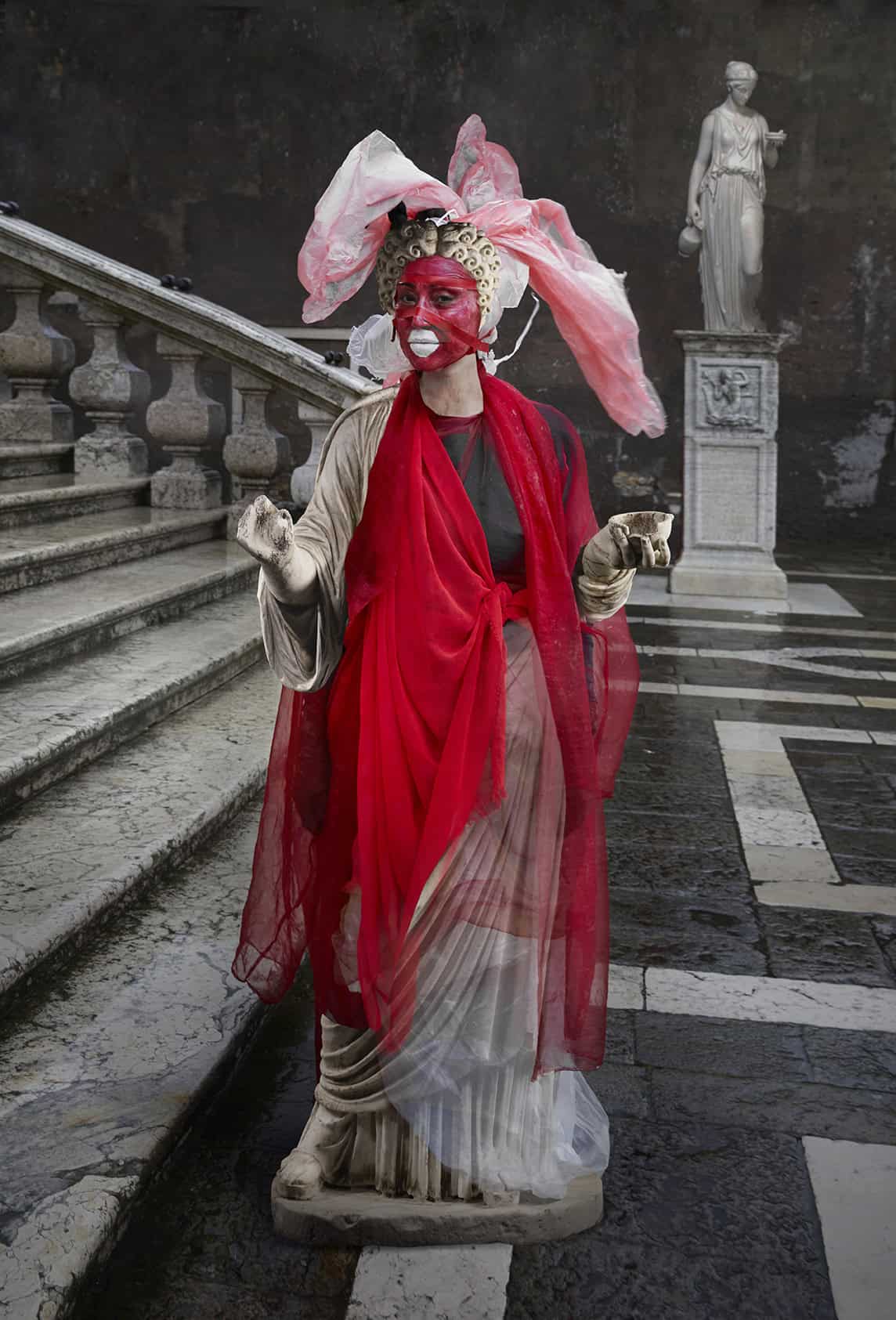
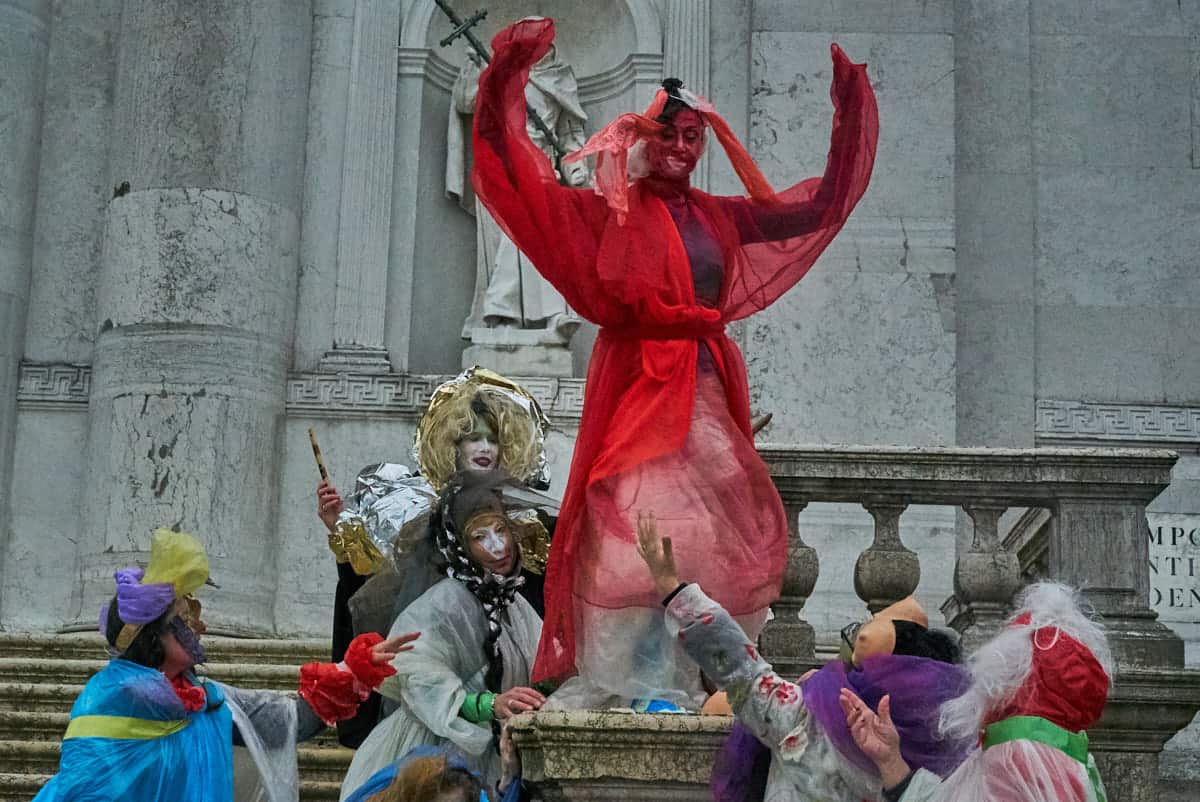
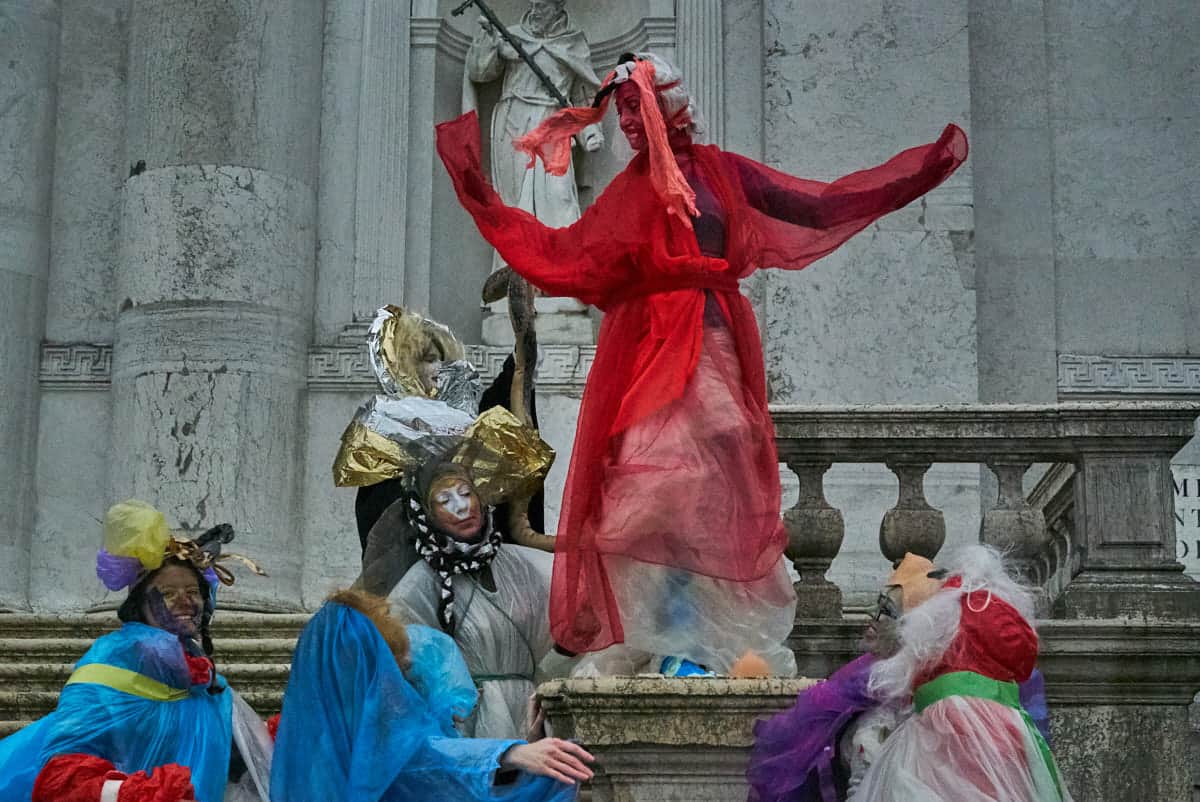
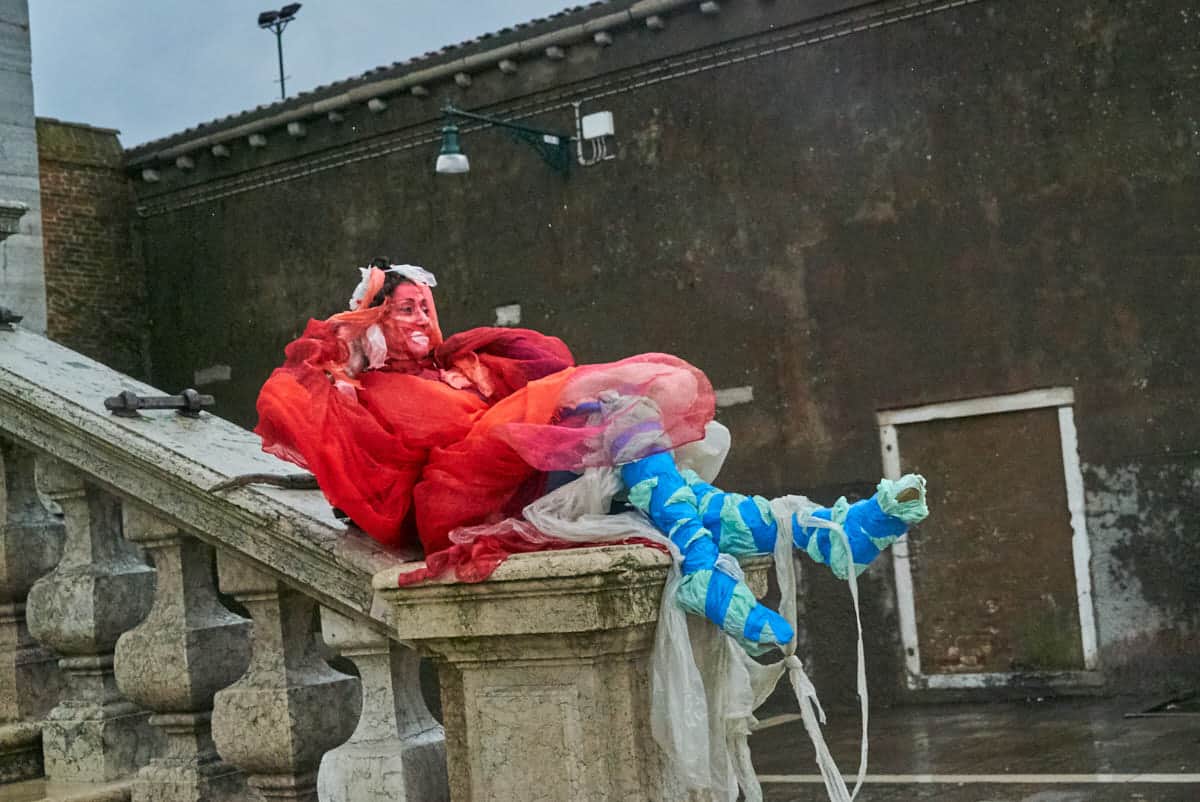
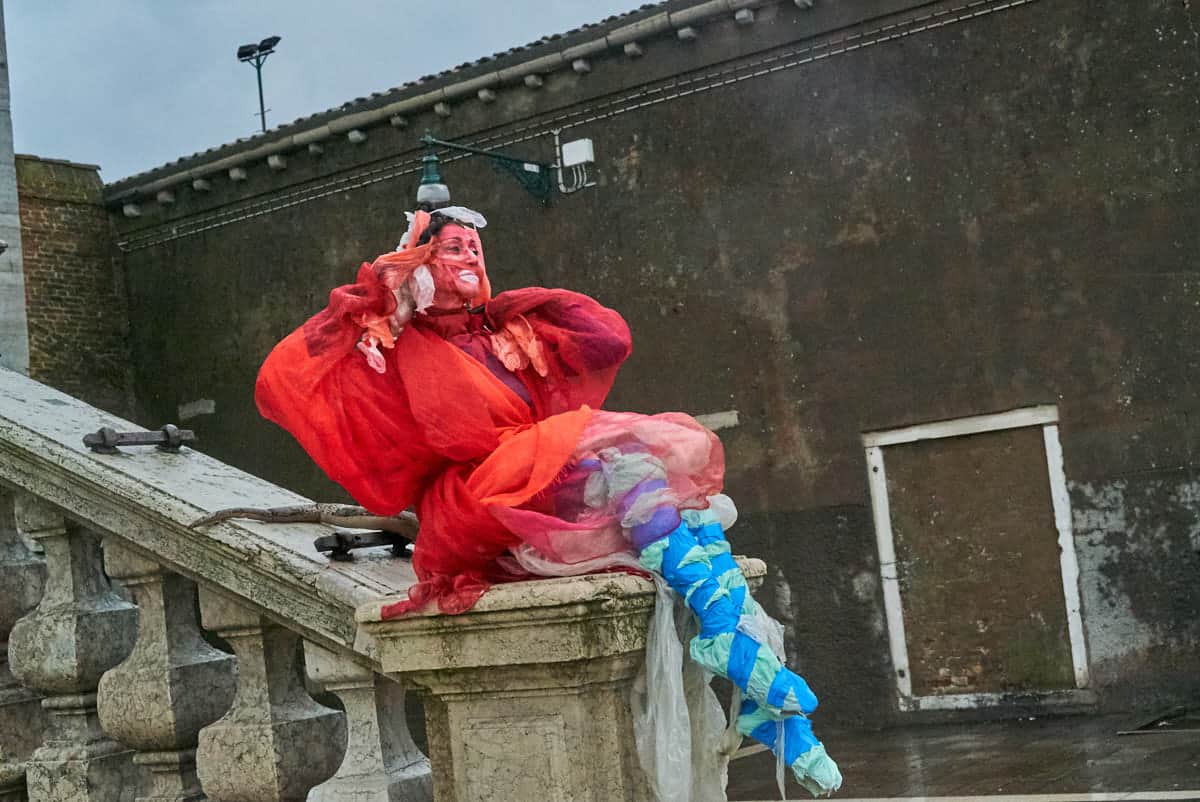
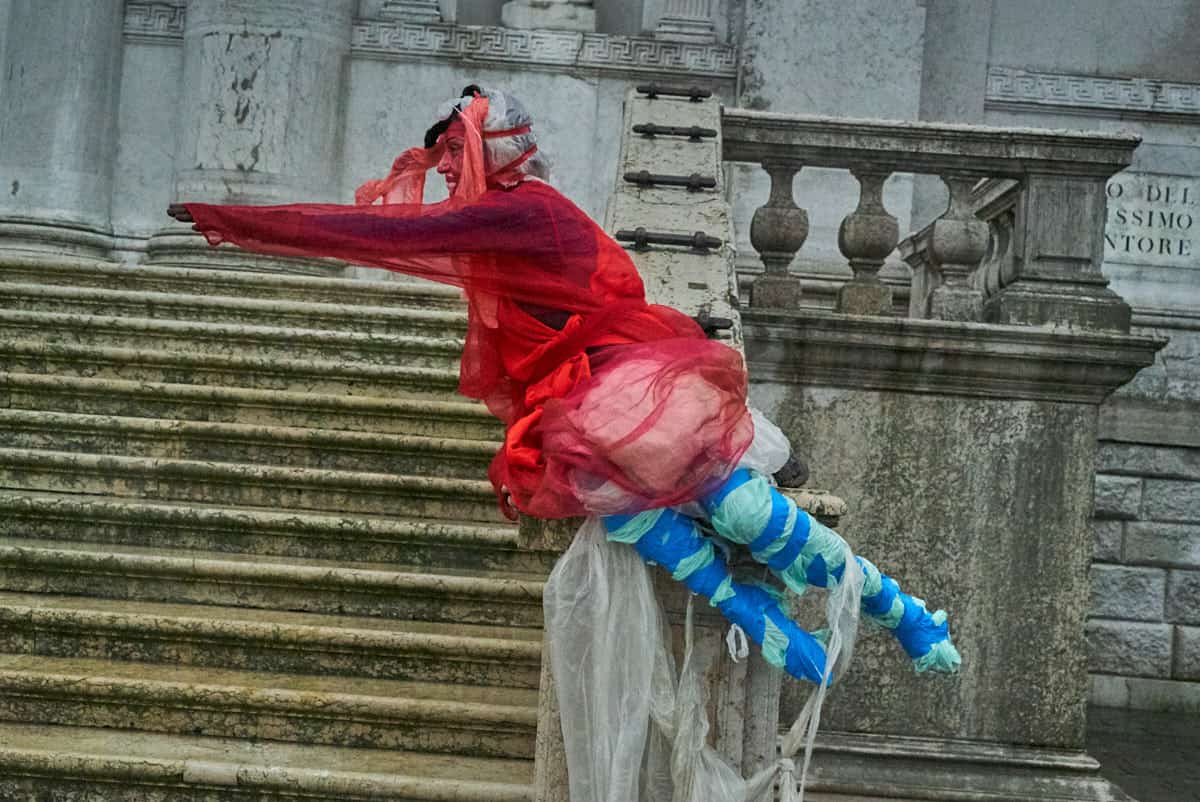
The artist concept of “Inside Gaia” is not defined as just a search for the cliché idea of loss of nature, but moreover, it gives access to a “critical zone” described by Bruno Latour in the Gifford Lectures (2013) of our living sphere. Similarly, Iris Brosch suggests a utopian and complete different perception of our planet that is animated, inhabited, and vitalized by other-wordly figures of women and men being relaunched by hybrid-mythical goddesses or multi-species creatures that remind us of friendly (or not so friendly) Gaia-related versions both caring and sharing in multiple gestures. Just as Donna Haraway proposes, “playing string figures” and the practice of “tentacular” figures, Iris Brosch’s protagonists closely communicate, inter-mingle, experiment, support and serve each other as one nourishing entity.
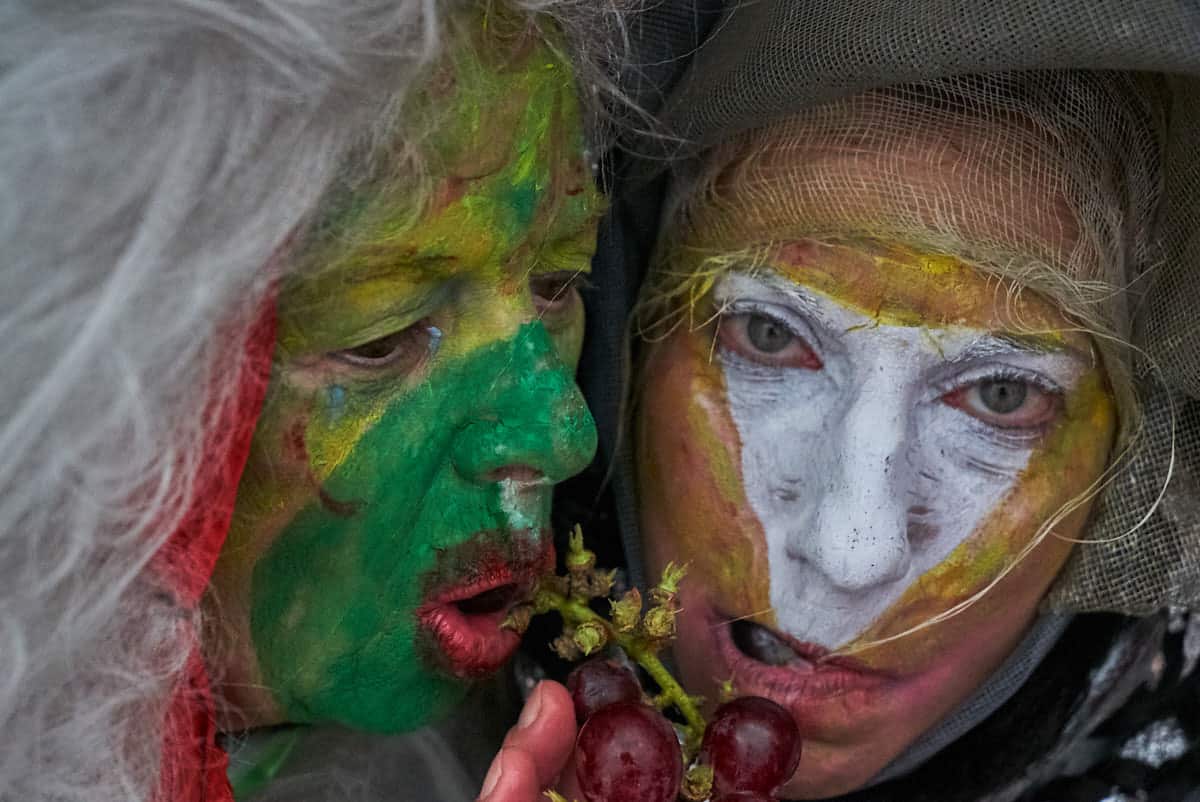
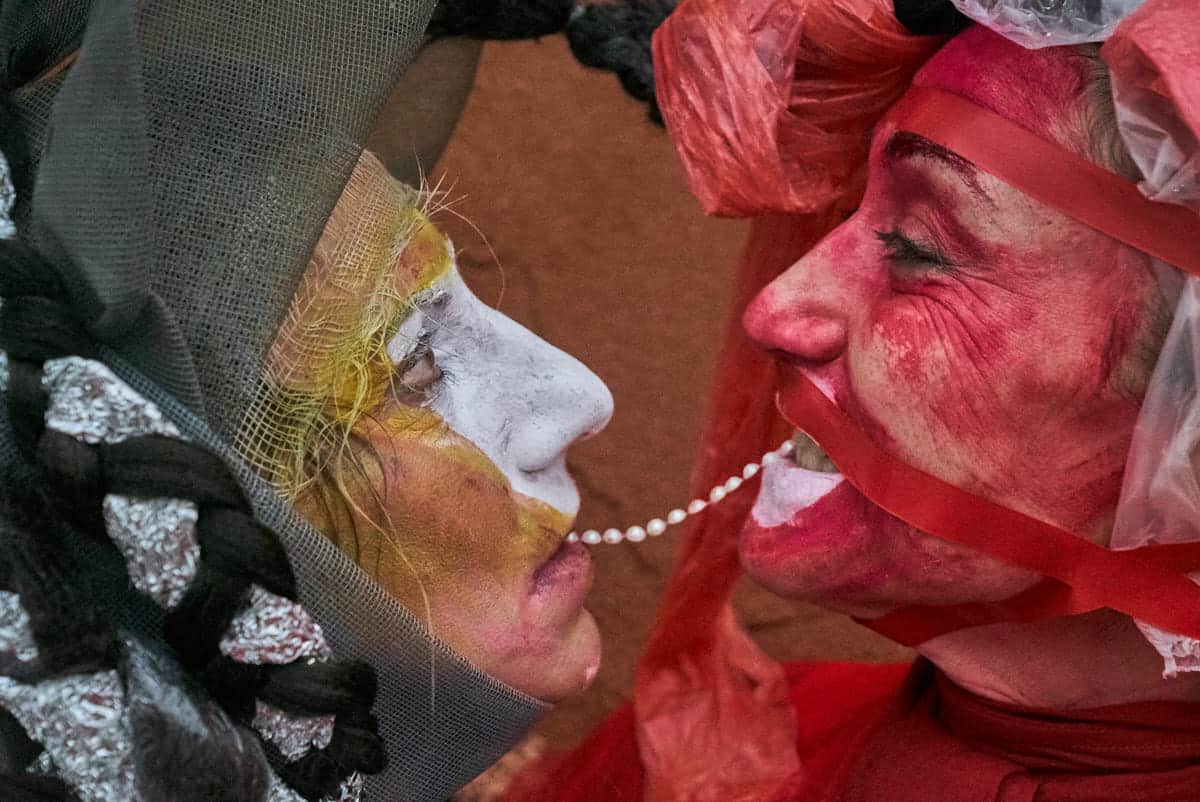
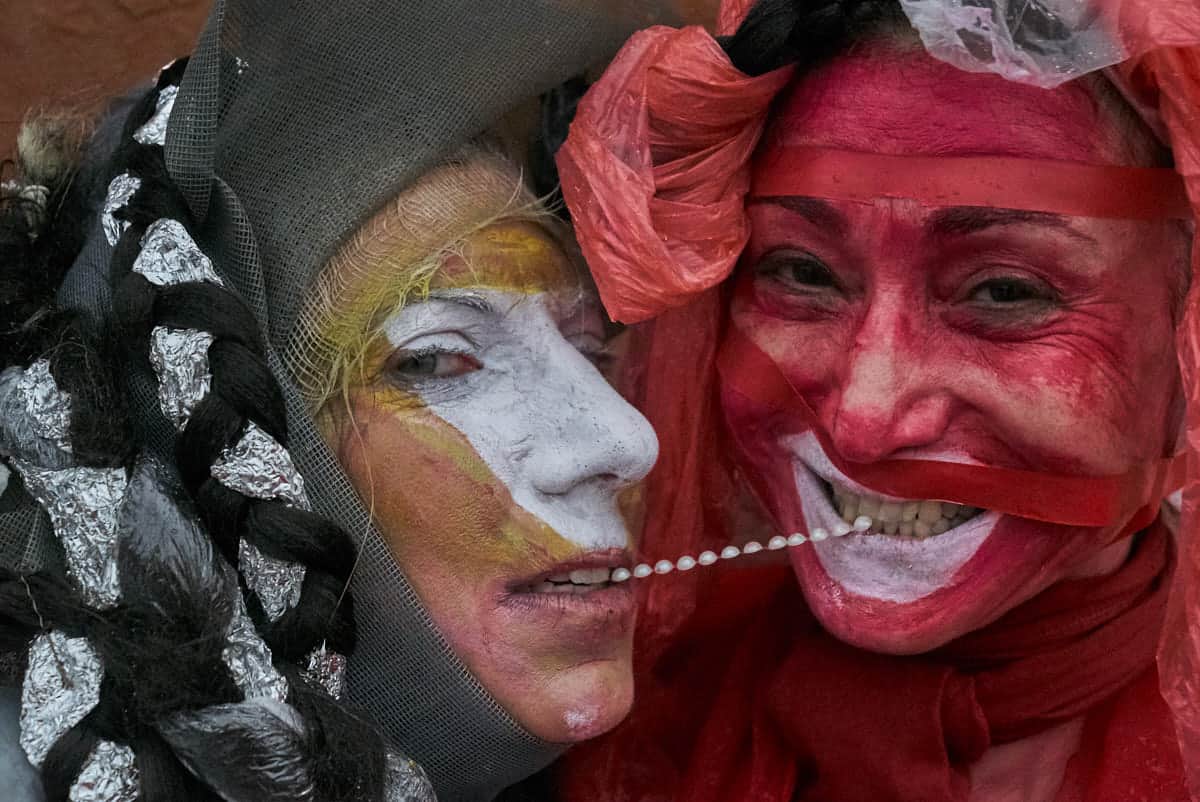
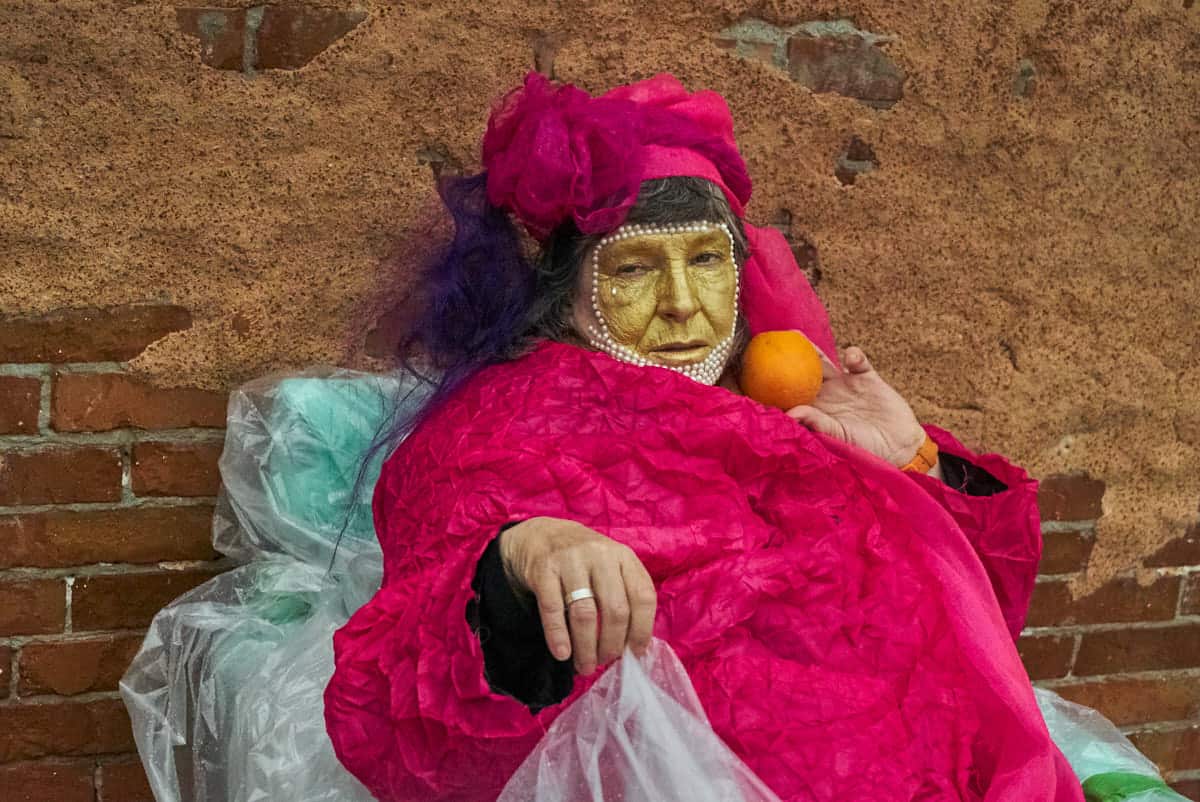
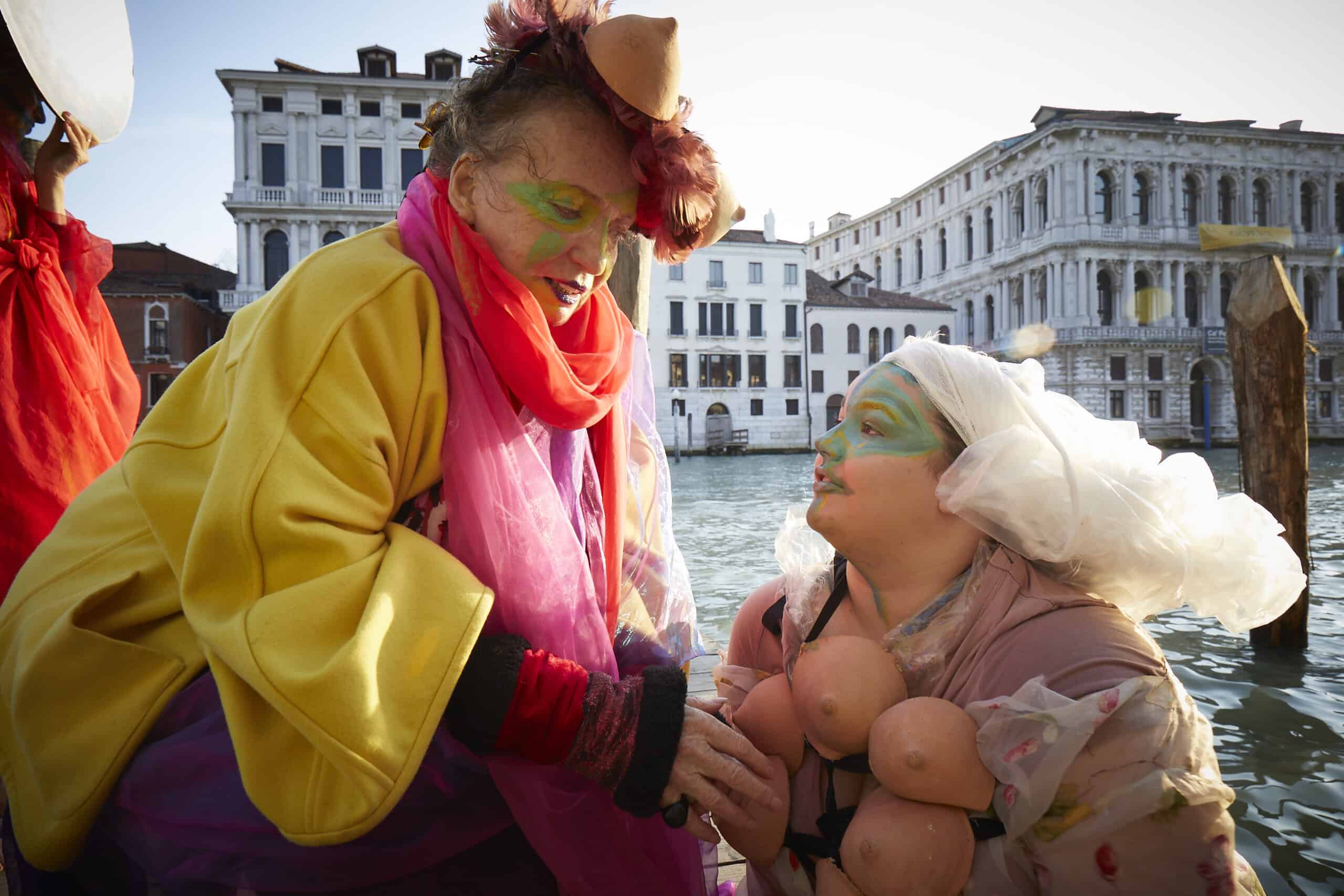
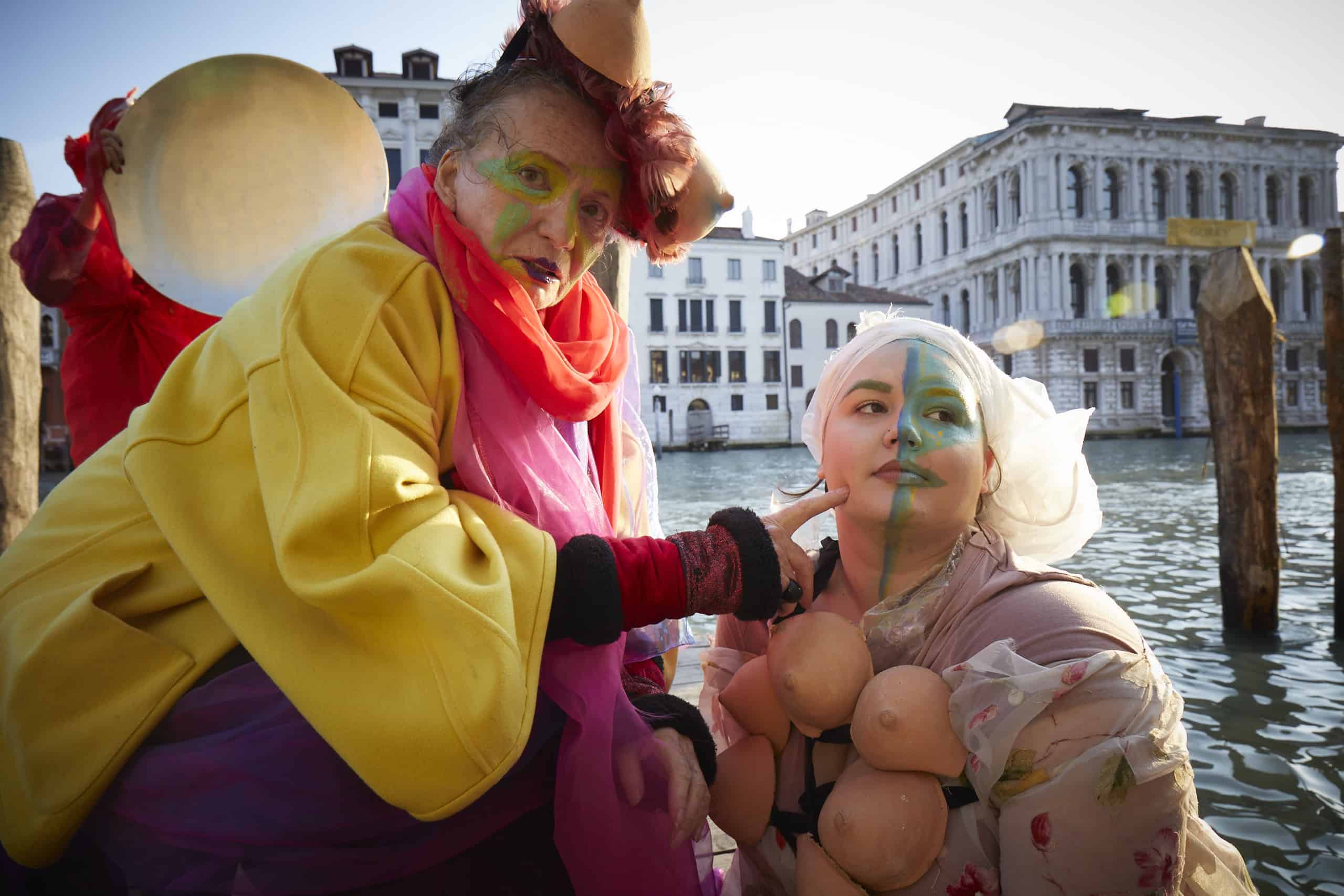
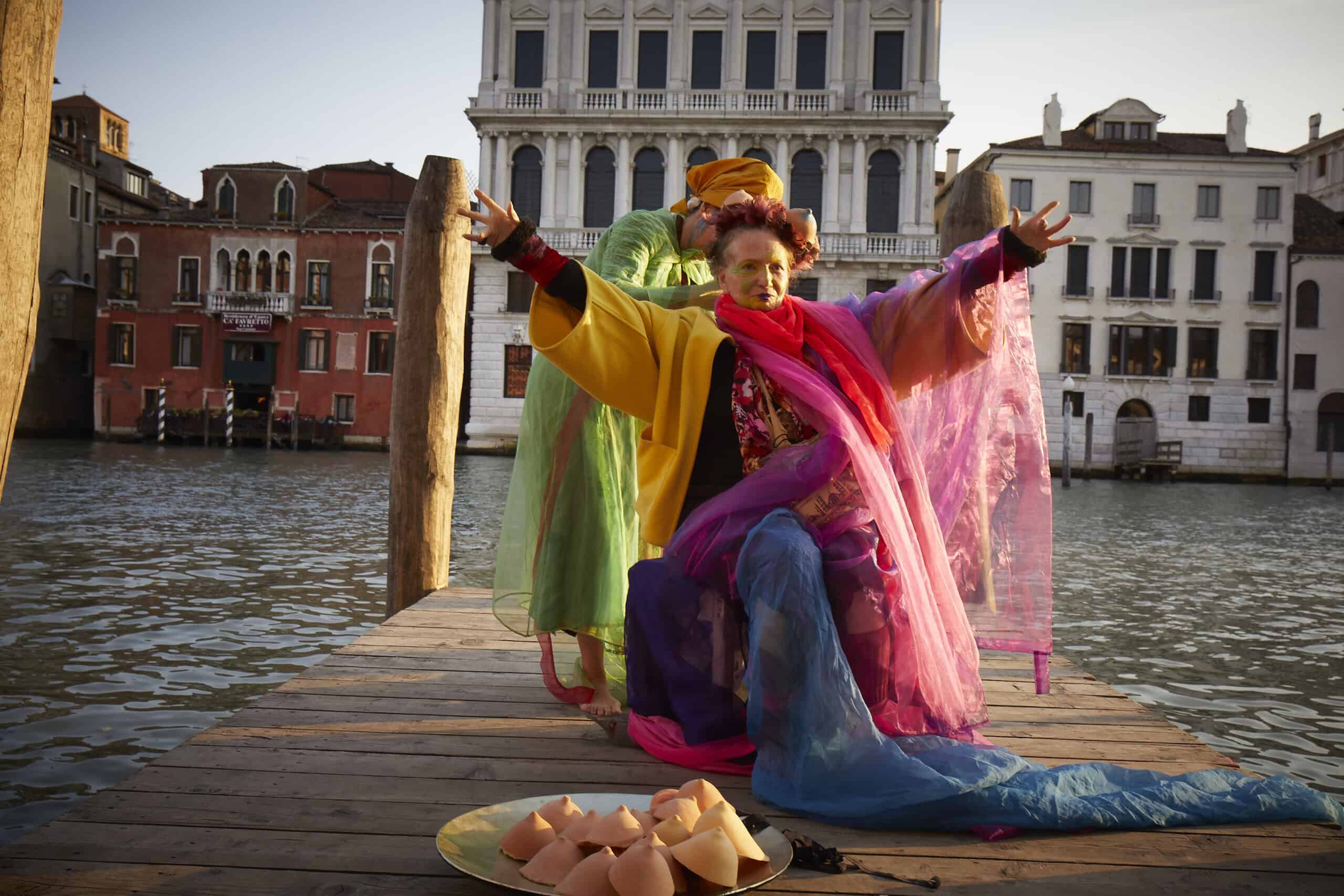
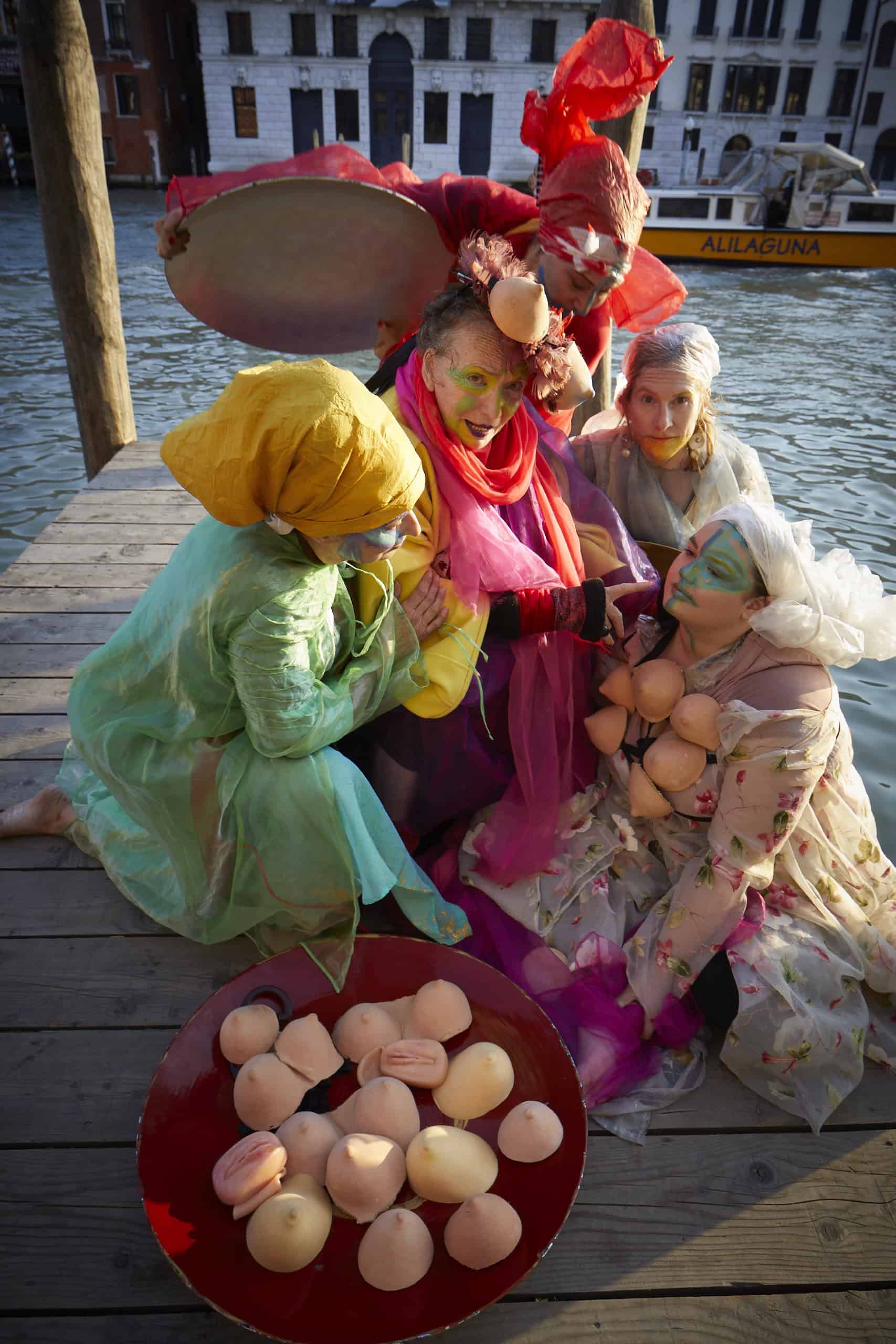
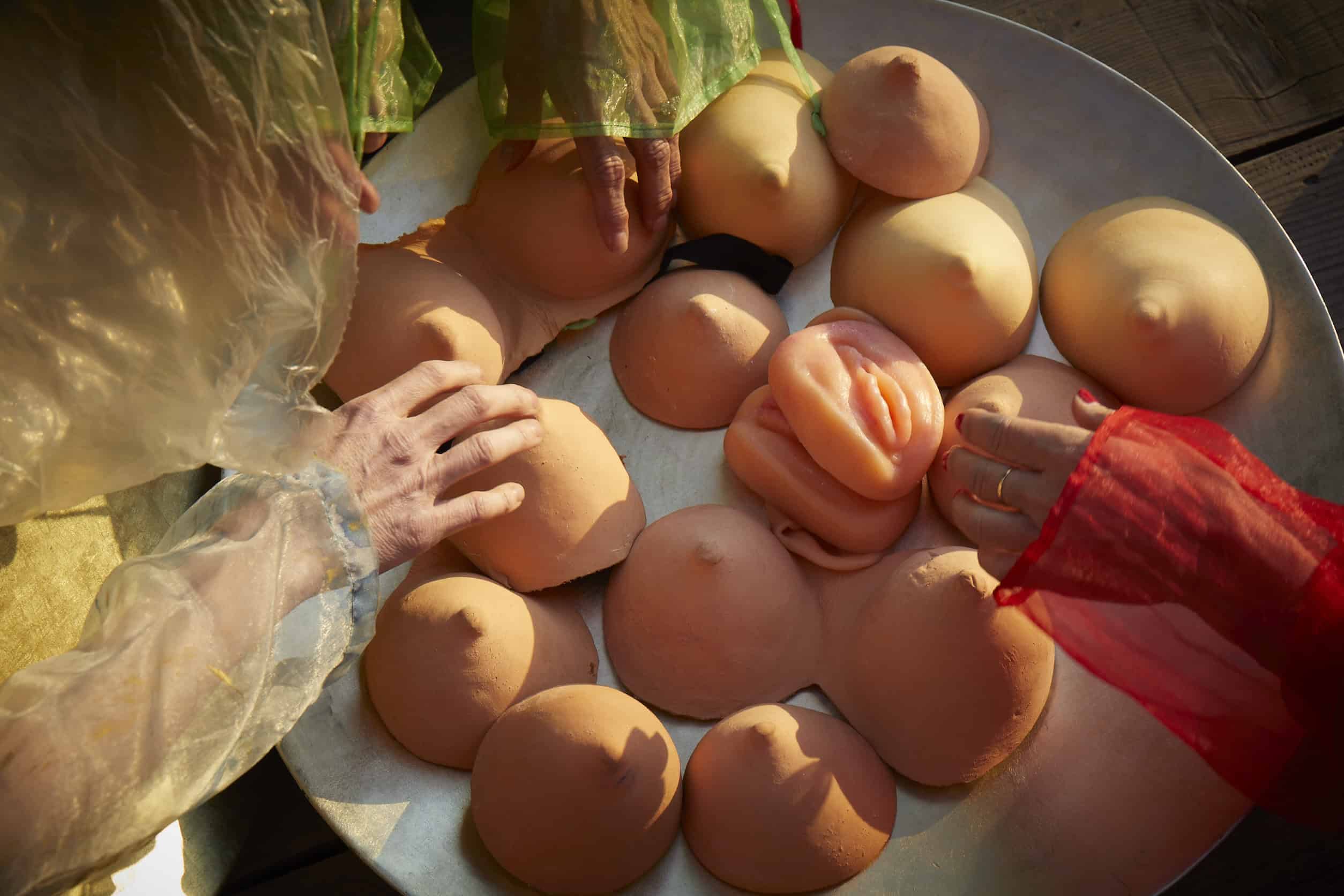
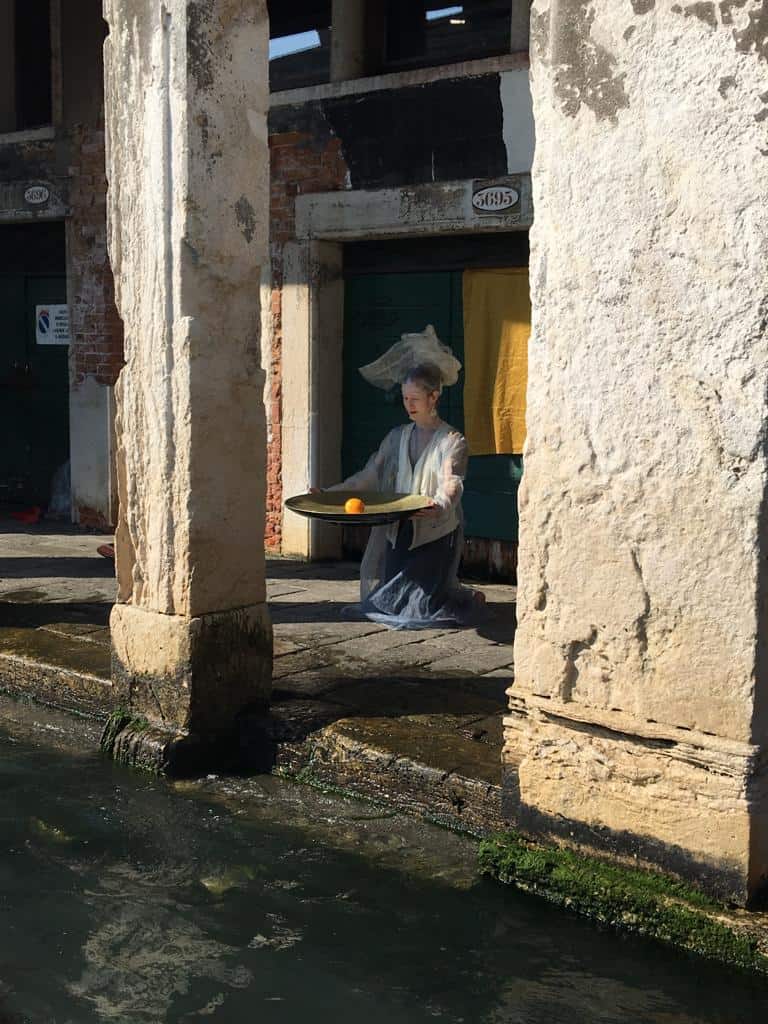
With staged scenes enlivened by multi-facetted entanglement, otherworldly deities or science-fiction figures share, care and tell stories from the past and ongoing extinction engraved into the Anthropcocene era, Iris Brosch knits a fabric of possible fields of action that differs from the ongoing, questionable back and forth between the dichotomy of neo-conservatism, ultra-right tendencies, and globalism (Bruno Latour/ Gifford Lectures, 2013, Facing Gaia, 2017.)
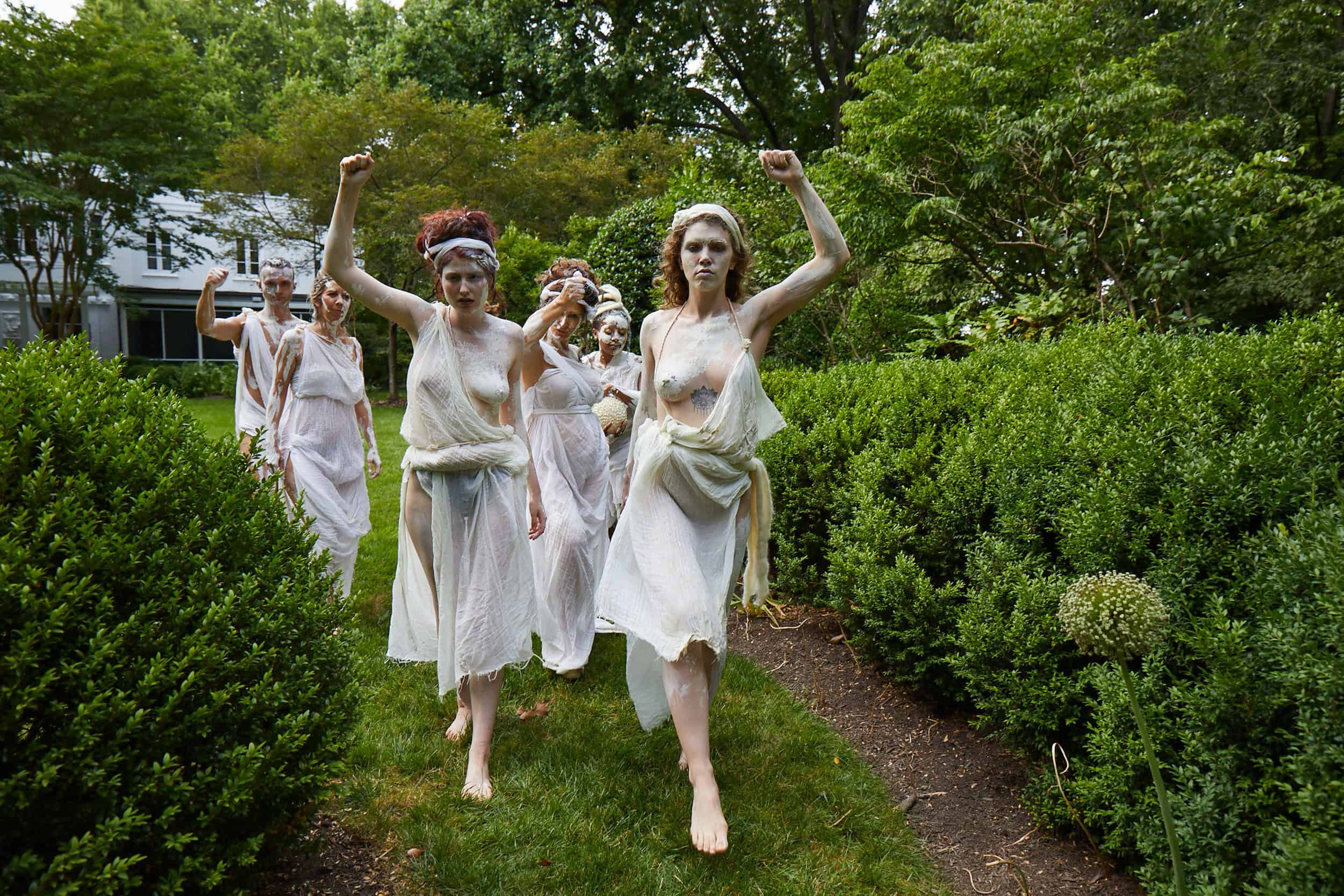
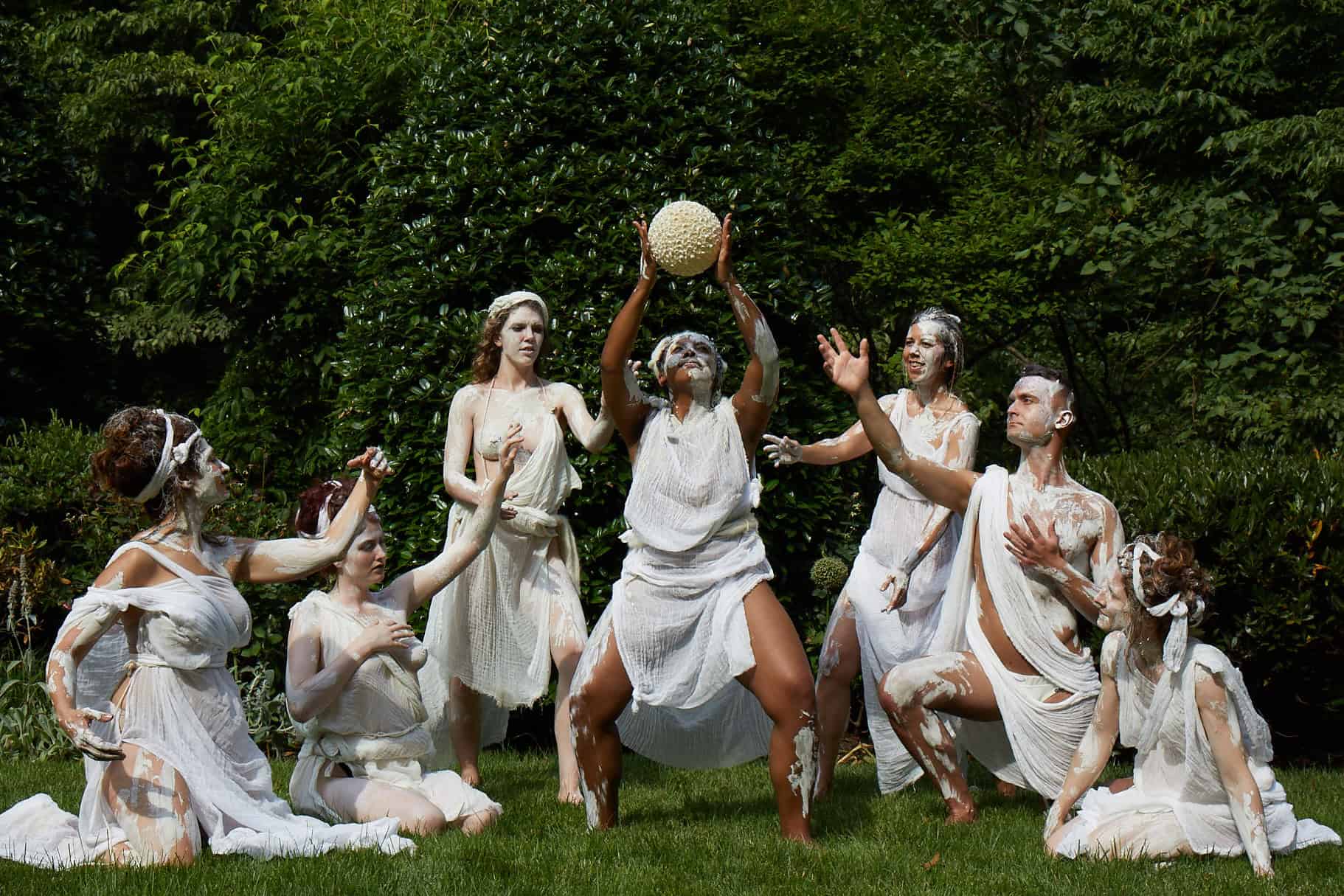
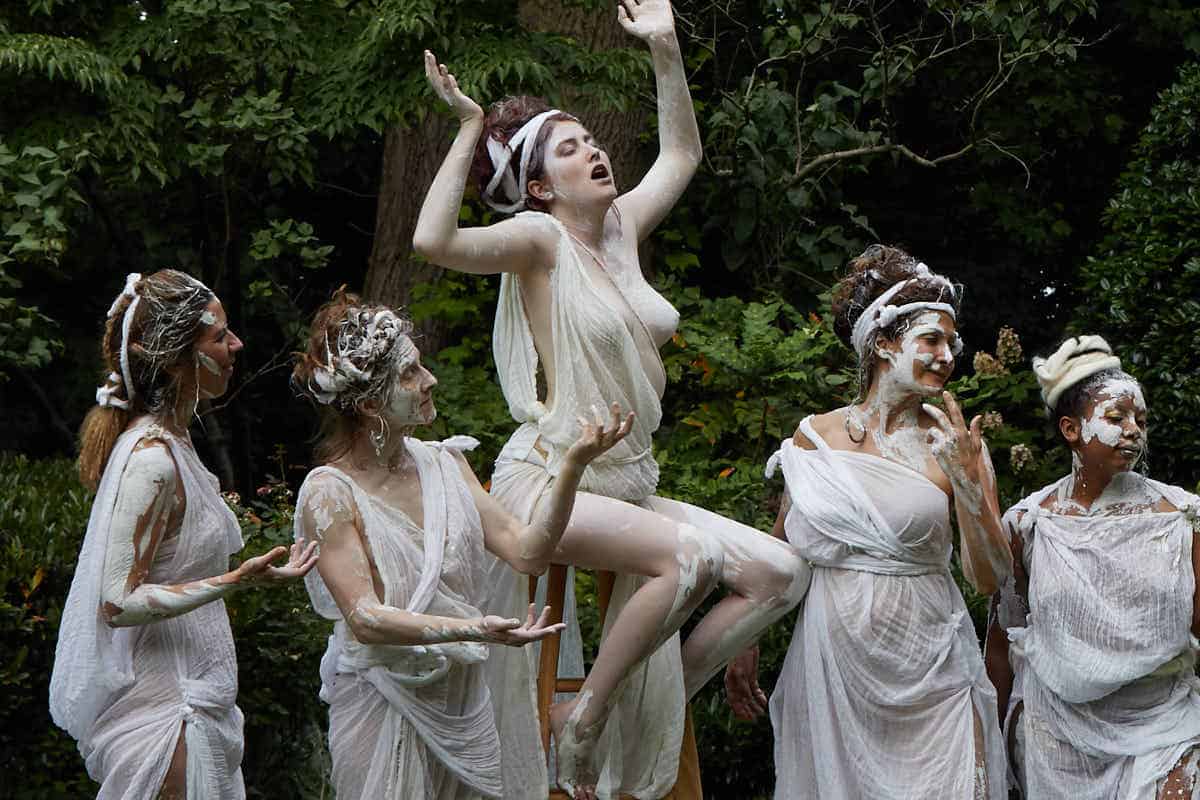
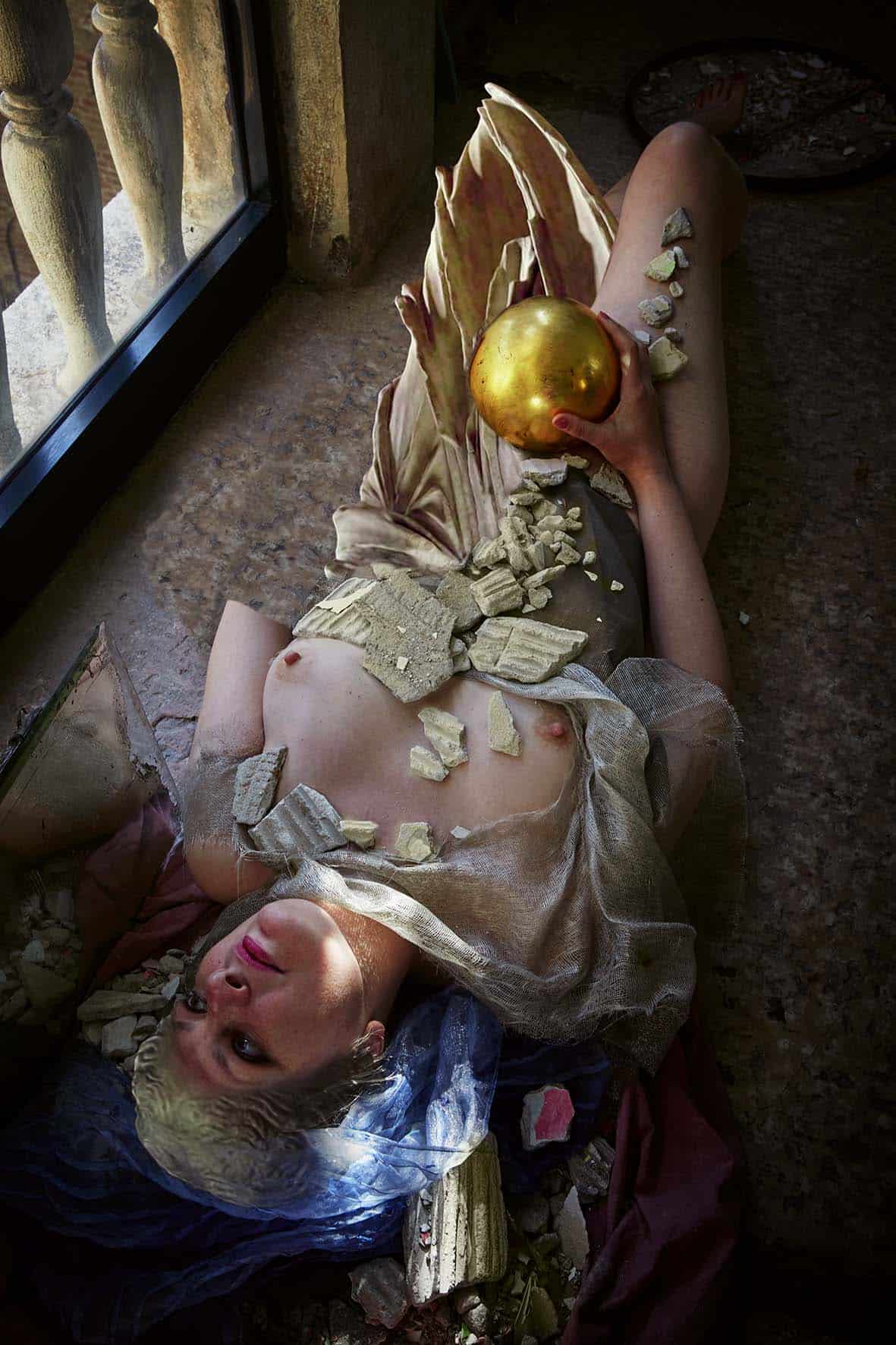
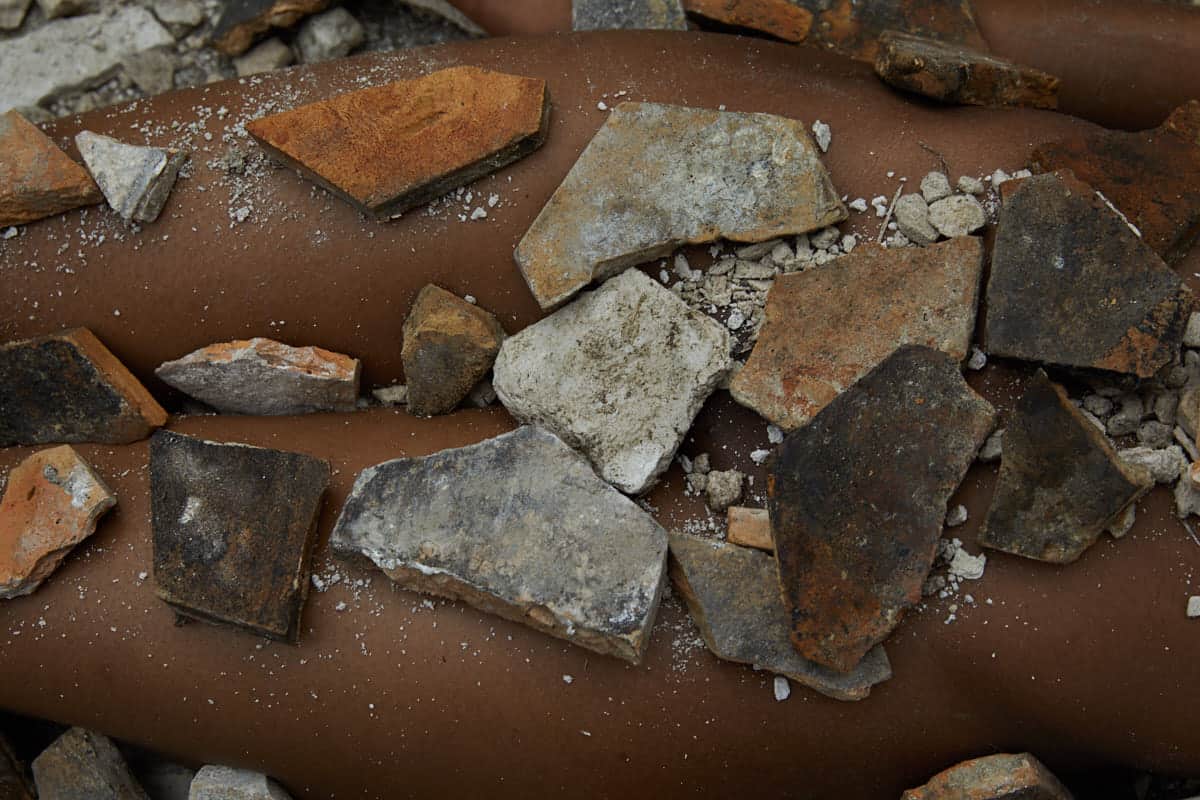
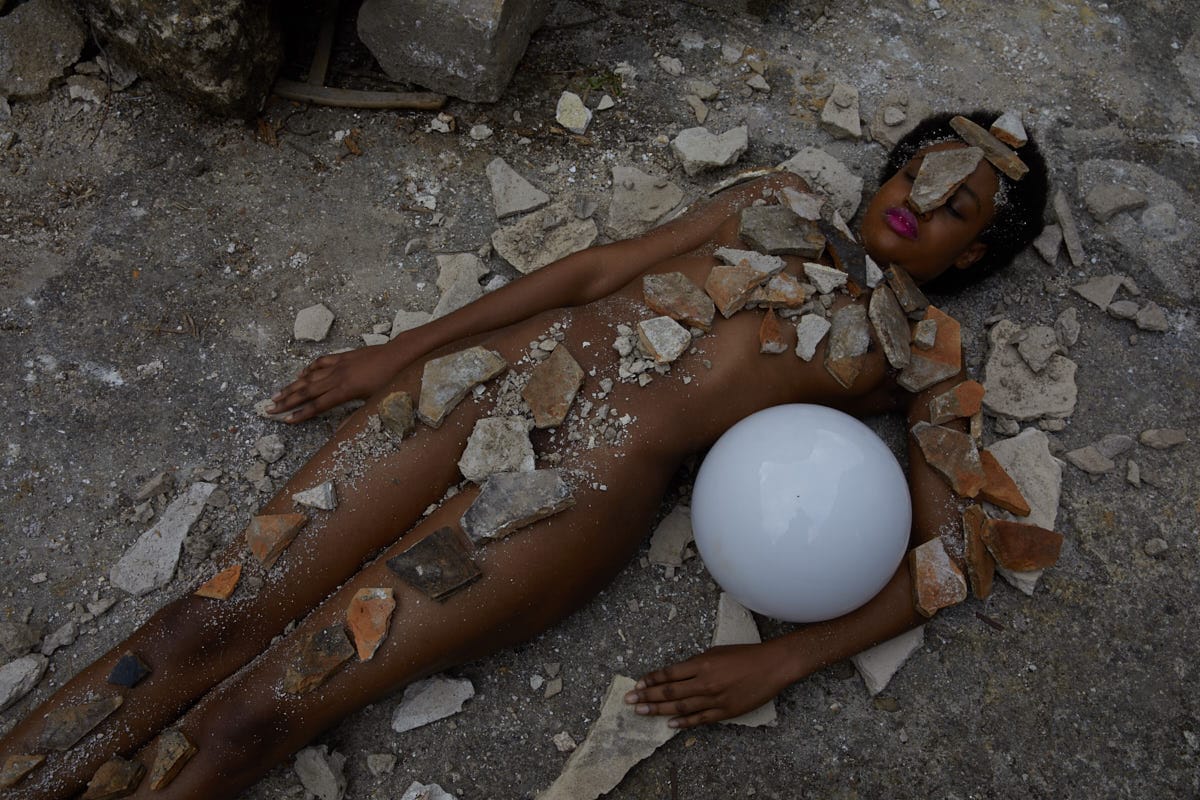
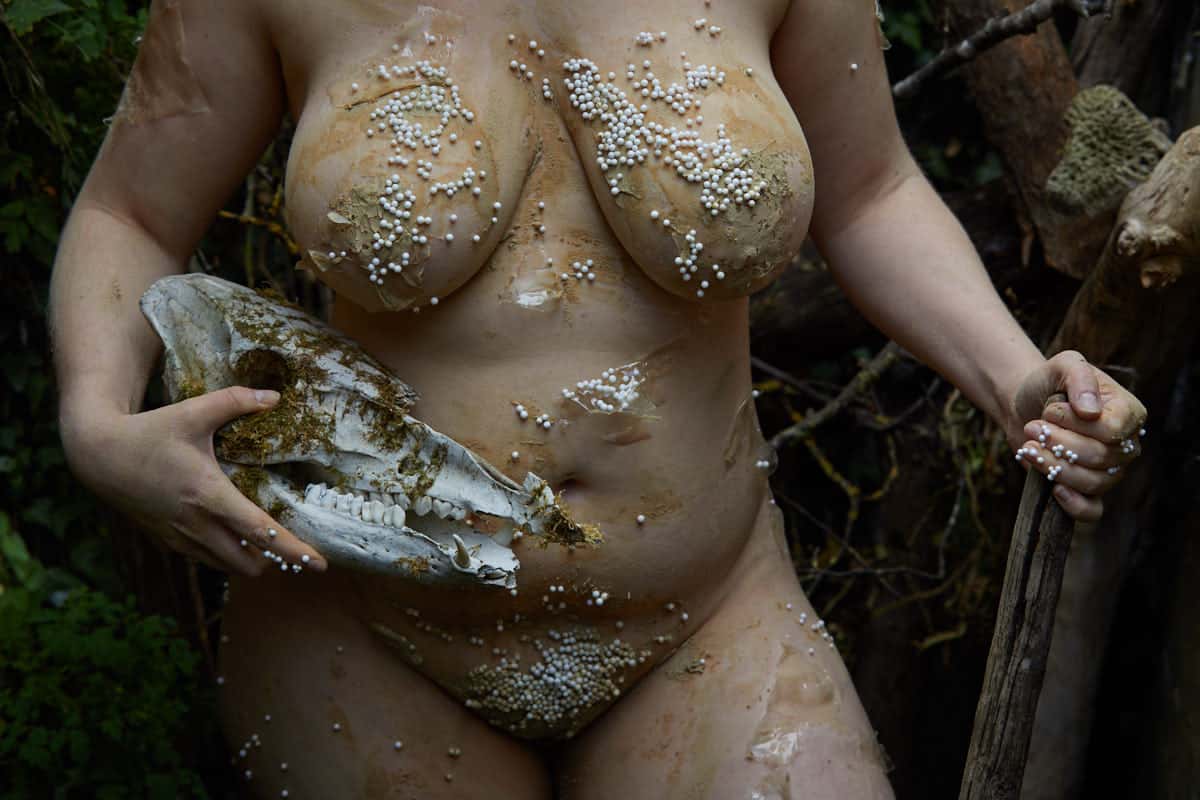
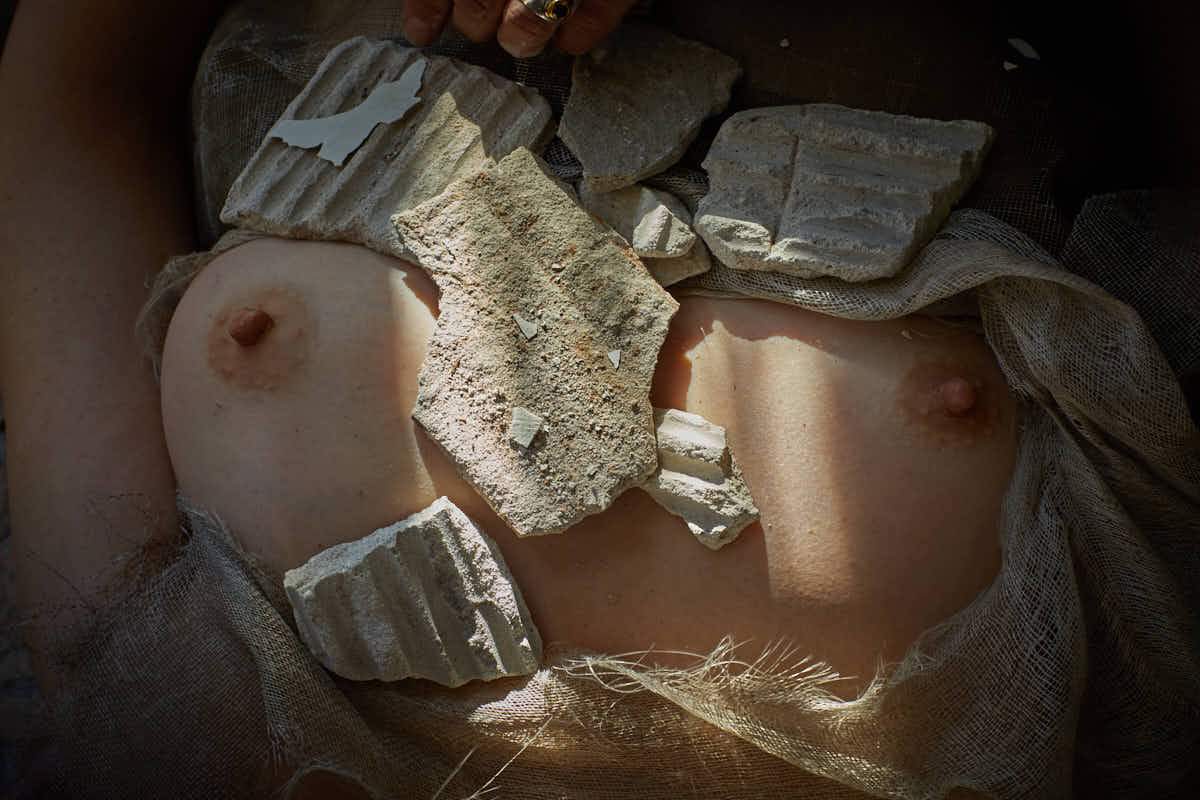
Tablaux XV — Inside Gaia: multiple Gaia versions, Palazzo of Fiora Gandolfi, Venice, Italy and Paris, France
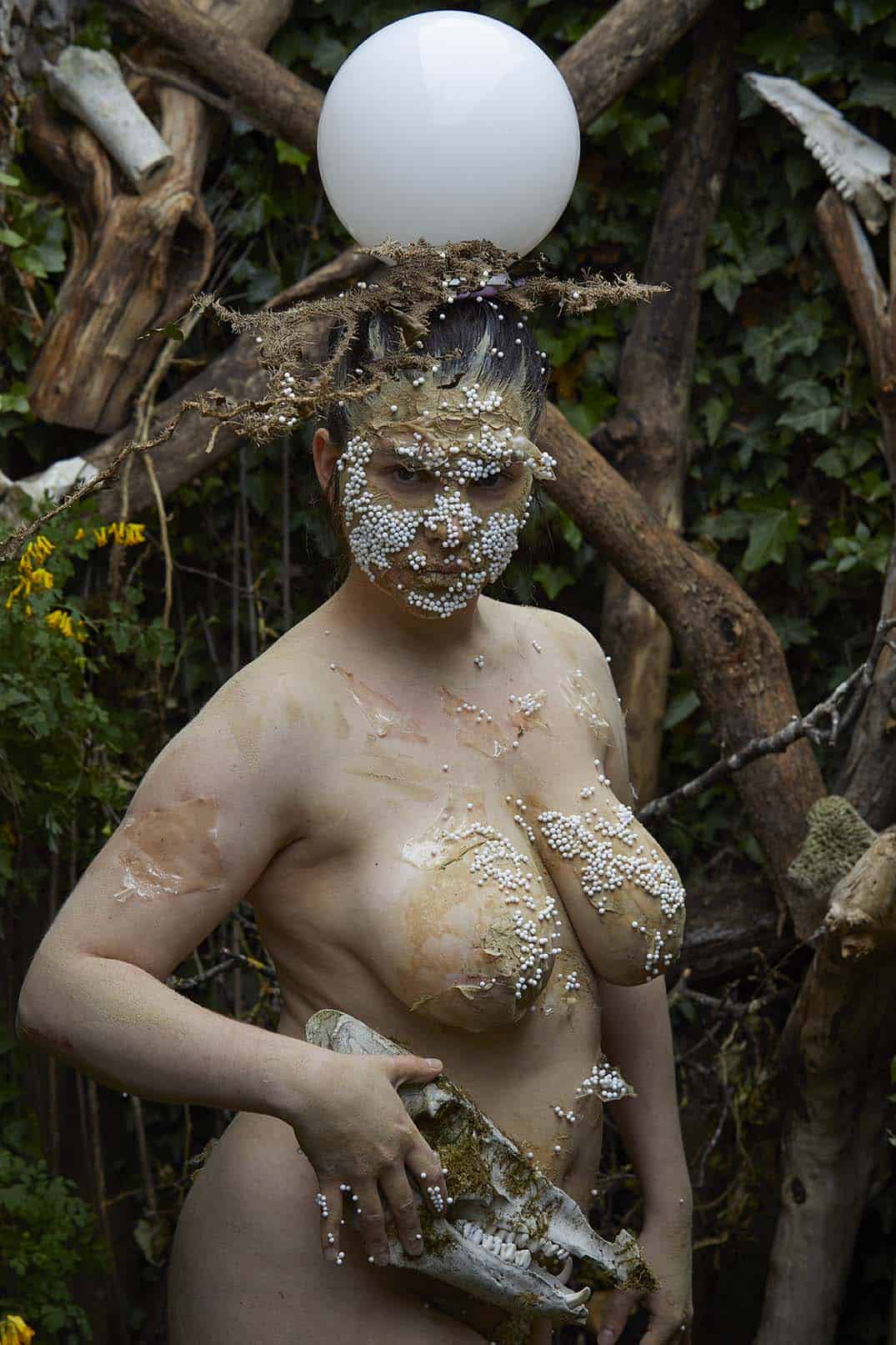
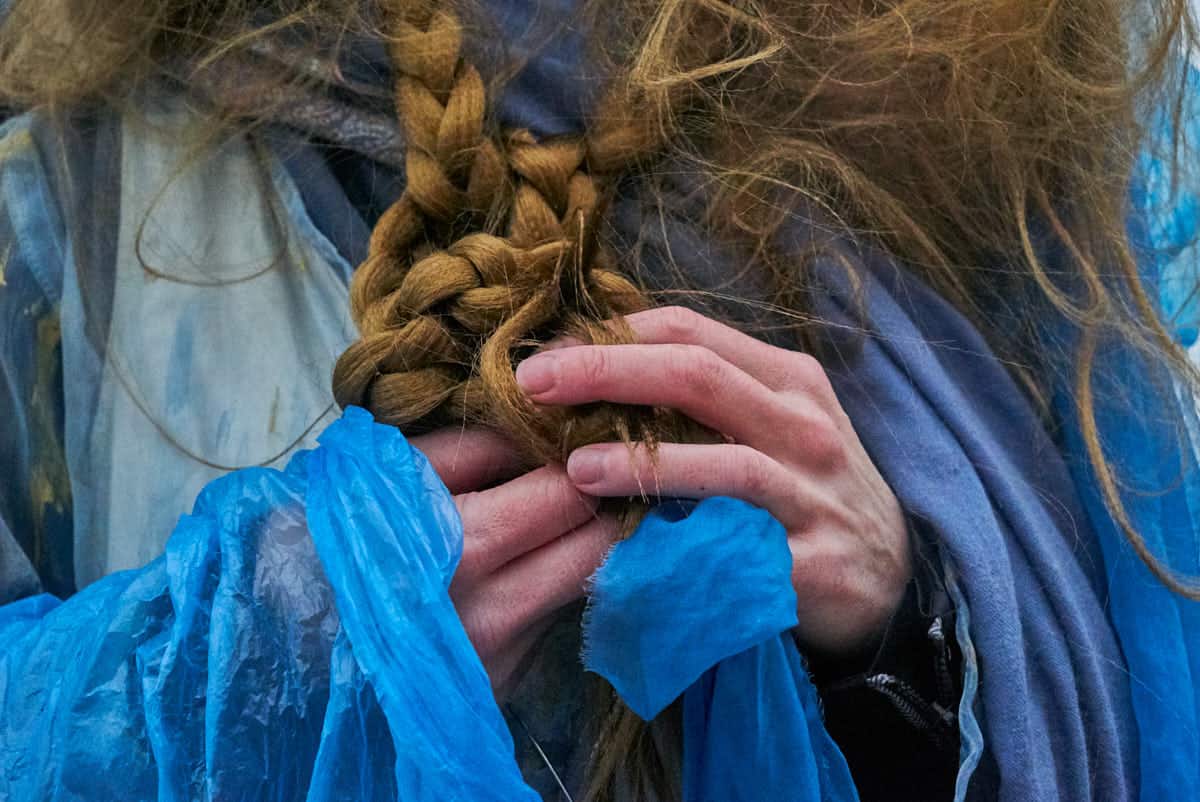
Instead, Iris Brosch explores experimental settings through refined image manipulation of mirroring effects, digital collage, and ways inside Gaia as a delicate, vulnerable sphere that we occupy. Her sensitive approach reveals the collective coherence with constant re-figurations of multi-tentacular gestures —“and such a wealth of lines”— (Donna Haraway, Staying with the Trouble, 2016) that seemingly merge into each other’s bodies as one, or appear to be released from one body as a metaphor of shared values and responsibilities. As a result, magic appears with a multi-leveled expression that emphasizes the urgency of Brosch’s artistic statement of vulnerability, preciousness, and urgency towards living “Inside Gaia”.
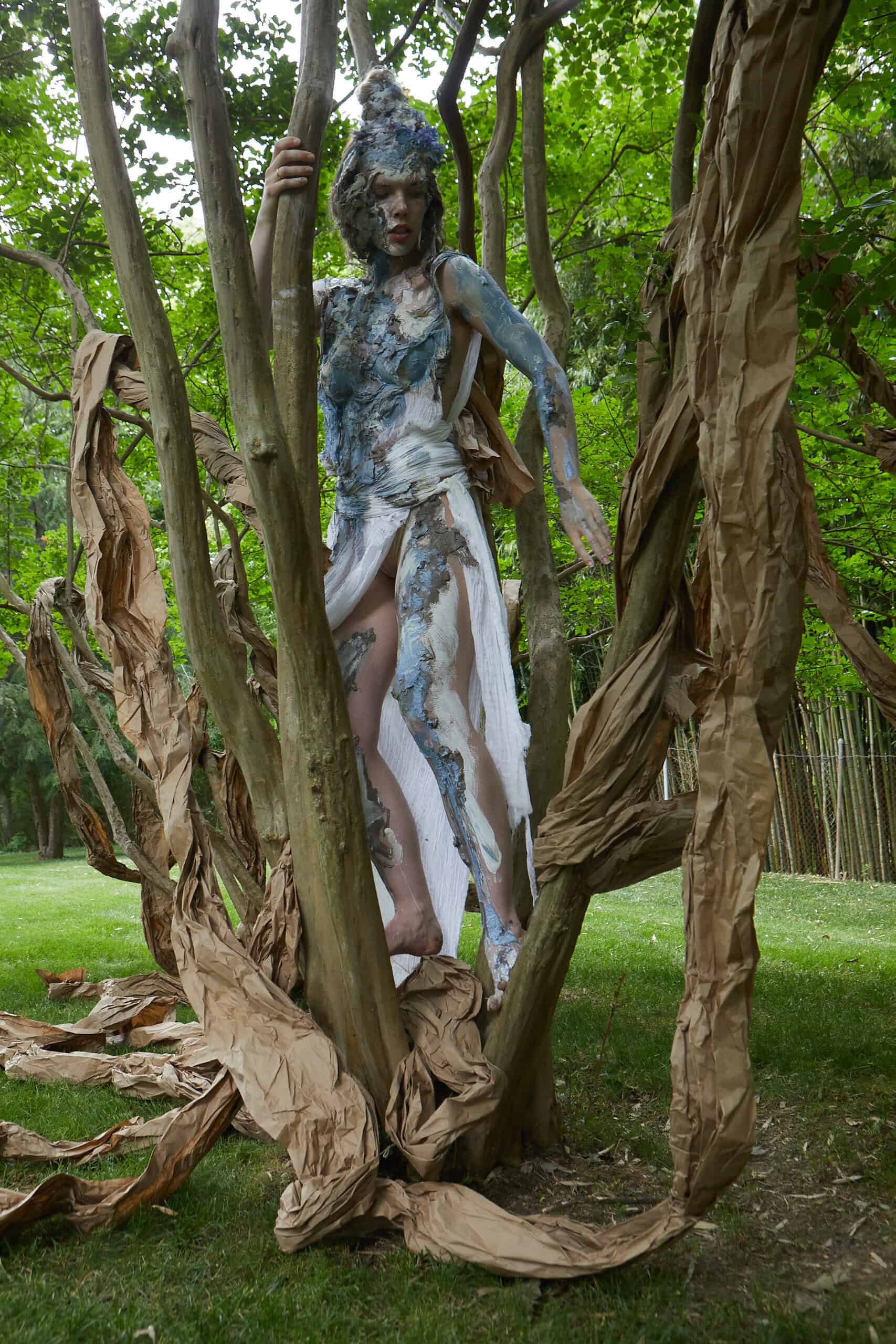
At the end of the performance week in Venice, a future outlook for “Inside Gaia” took place at the panel hosted by Manuel Carrion of Galleria Il Redentore on Guidecca facing Venice. Over 400 years prior, Galileo built his first telescope, and while stargazing at the Venice Lagoon, he discovered the highlands and “seas” of the Moon confirming Copernicus’ model of a heliocentric Solar System. Today, back to gravity, mortals recognize Earth as the one and only place for living species.
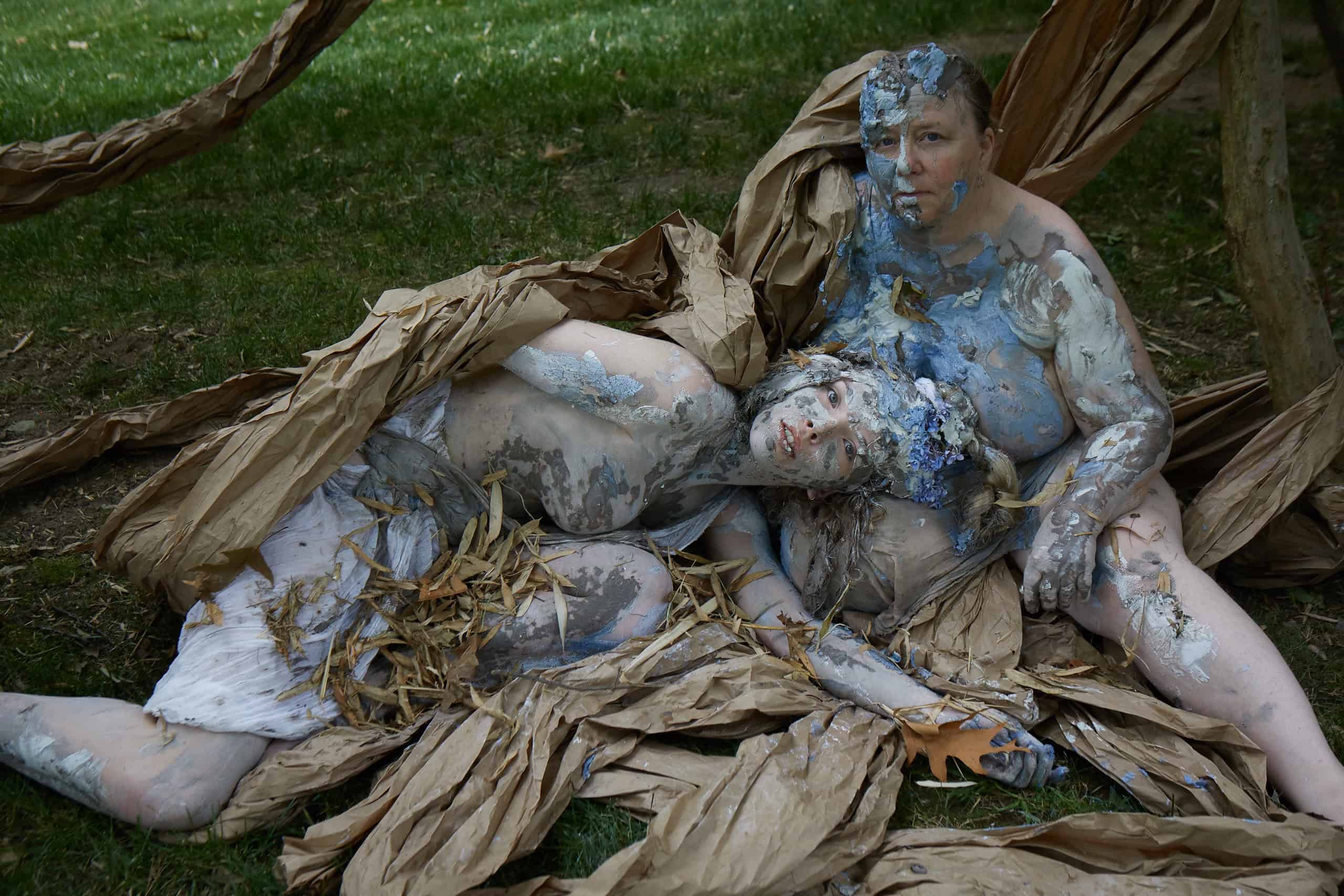
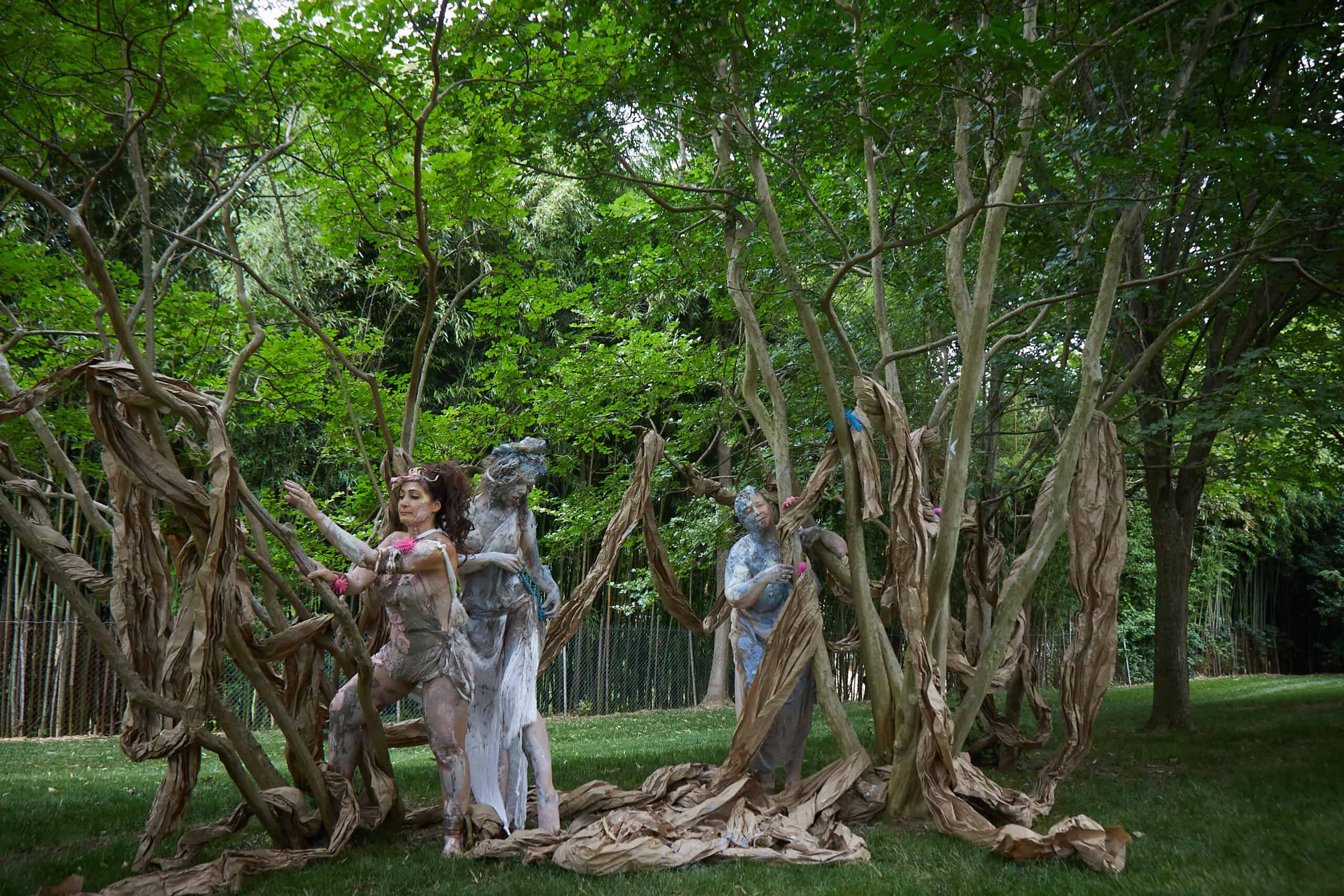
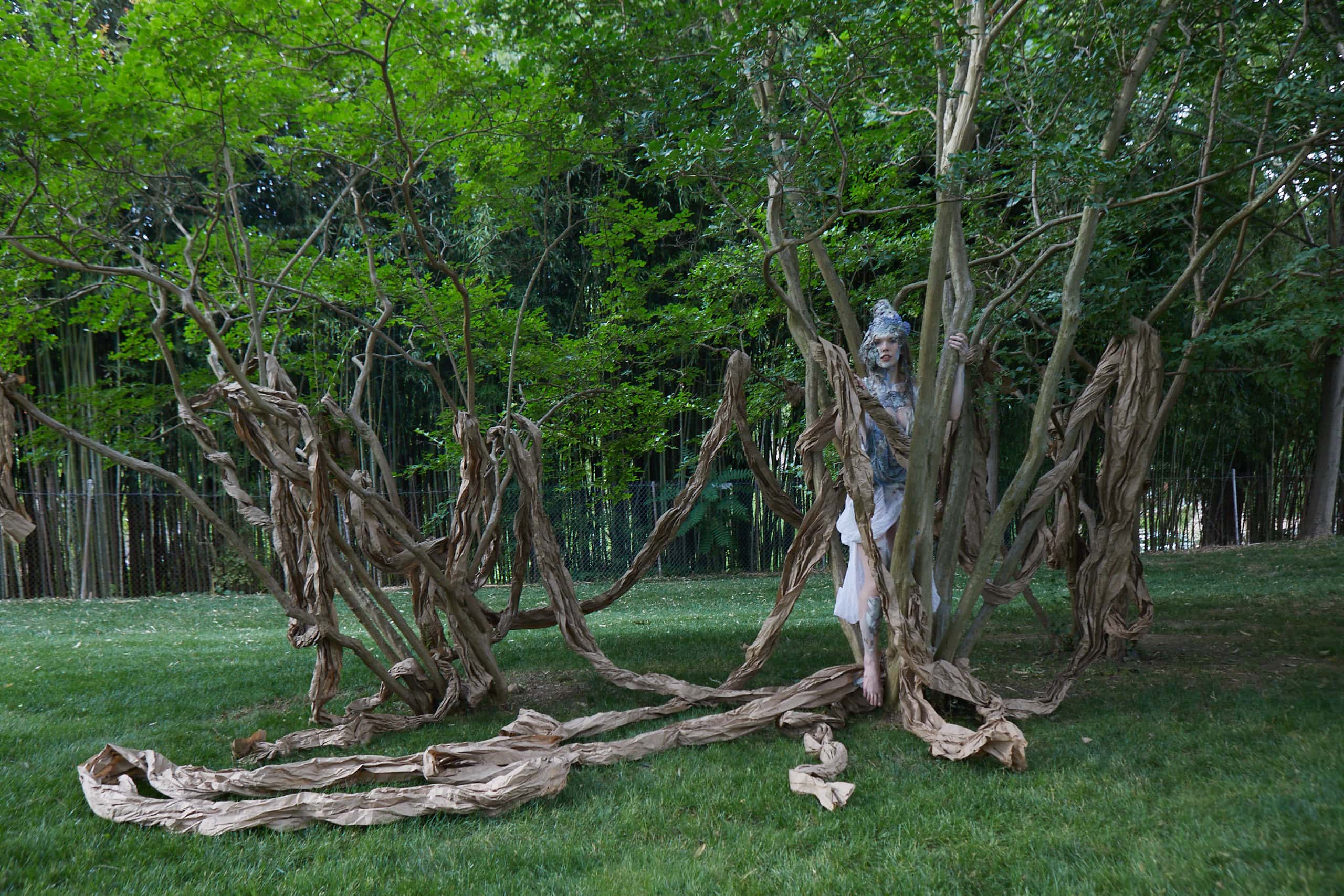
In the meantime, we share an underlying tale of environmental concerns embedded in tectonic activities that shape and change our landscapes over time and create a new geological Anthropocenic layer on top of all other strata. Now, in the 21st century, we are facing extortion, extinction, and environmental degradation paired with passive ignorance. We are responsible as collective players and must realize that all human and non-humans must be re-bound to Earth, be aware, and take care of Earth with responsibility. Iris Brosch understands that Gaia is a local issue on a global level. This is the reason travels to various places to multiply the Inside Gaia concept. Each place informs her current concept in site specific performance work.
Certainly, Gaia does not stand for nature, nor needs to be understood as a nourishing and caring “Mother Earth” anymore. While constantly turning our planet into a cloaca, Iris Brosch senses the entanglement between dirty businesses and the planet’s precarious condition in the specific environment. Gaia is fragile and completely out of balance along with all atmospheric formations of climate change as an outrageous result of human activity. Gaia does not care about us because we do not care about Gaia. Based on Hesiod’s theogony, Gaia is a very contemporary prolific, but also dangerous, fragile, and a violently cataclysmic power – (sound familiar?). And certainly, Gaia is at home at any place on Earth requiring local and site-specific explorations to understand the nature of Gaia.
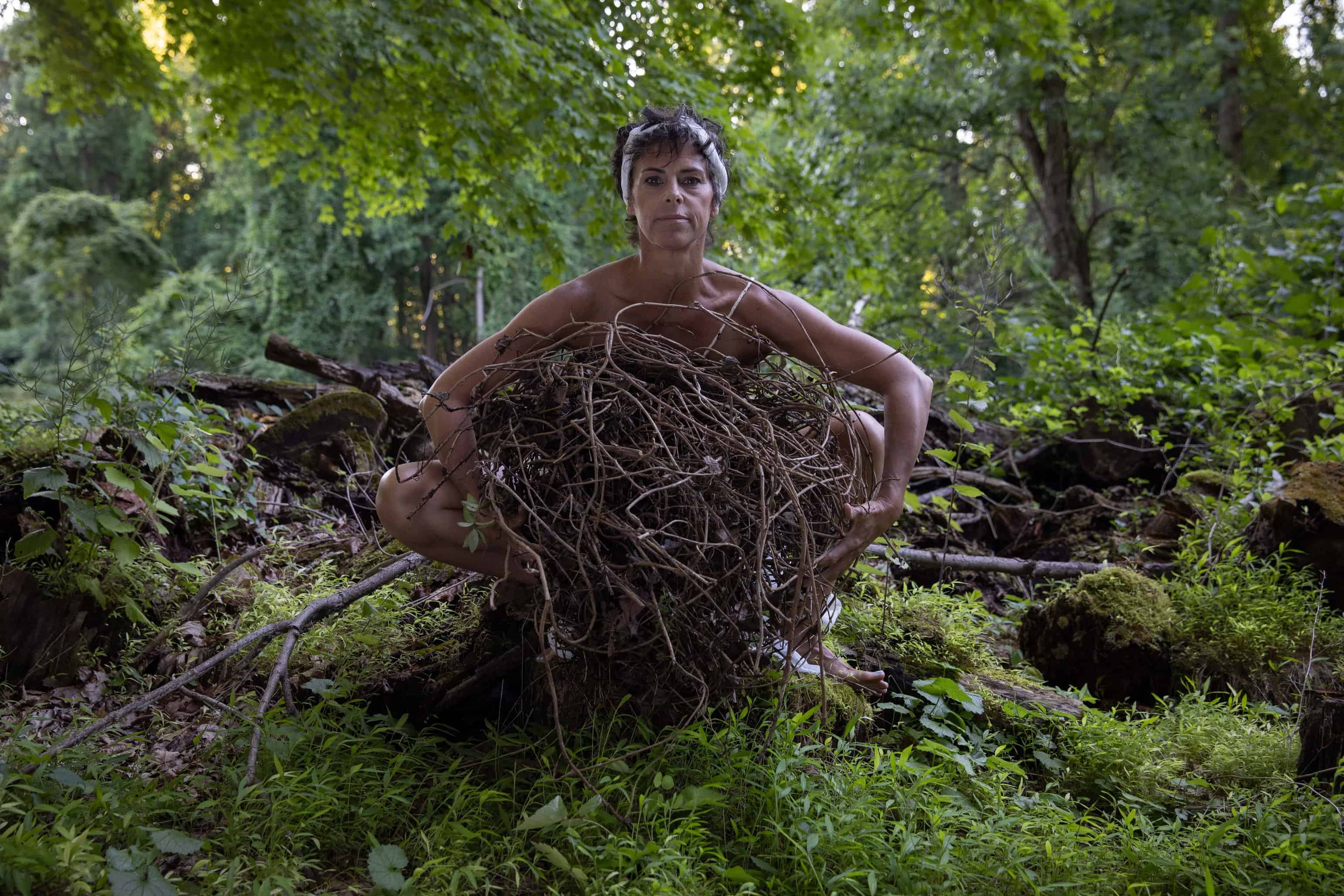
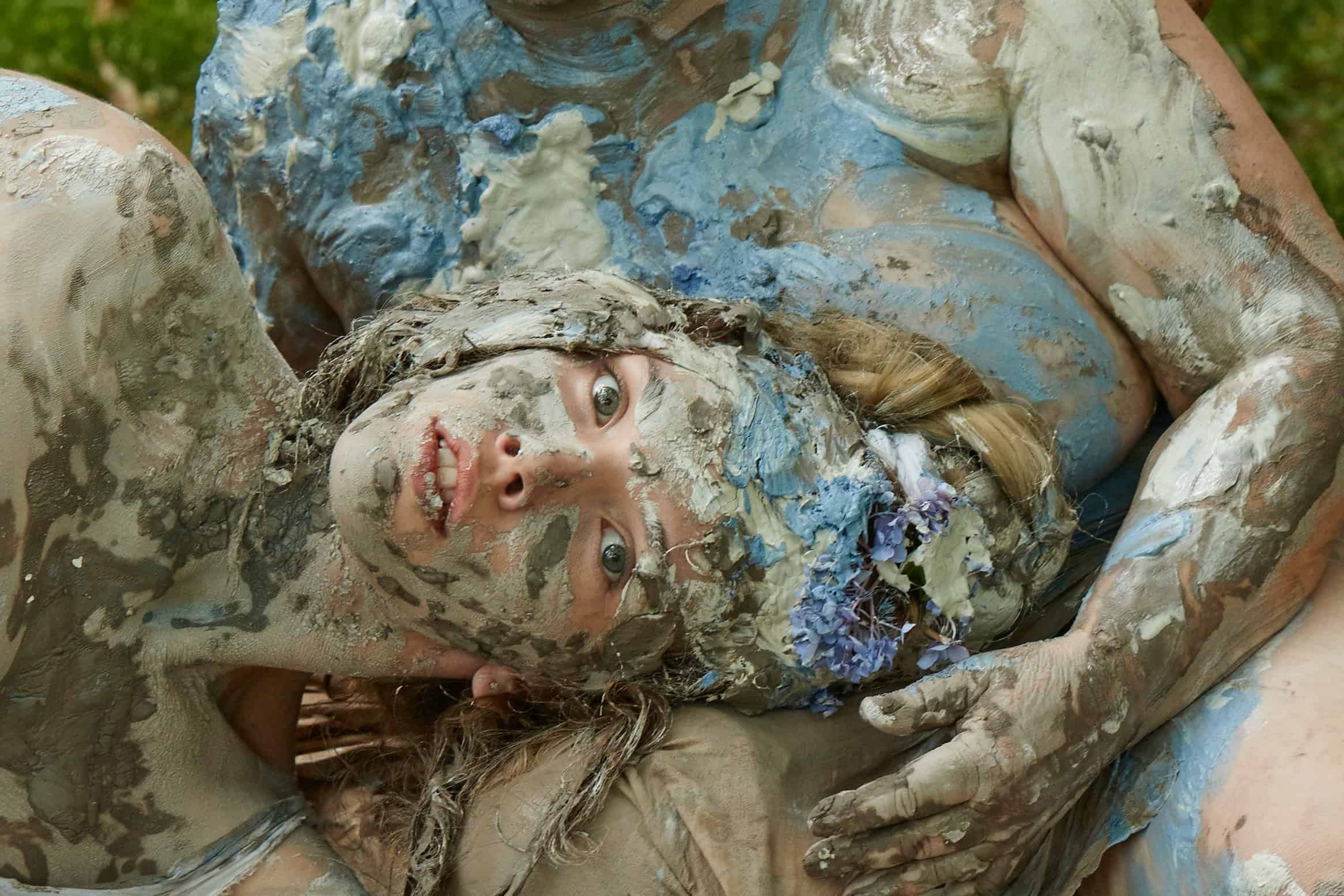
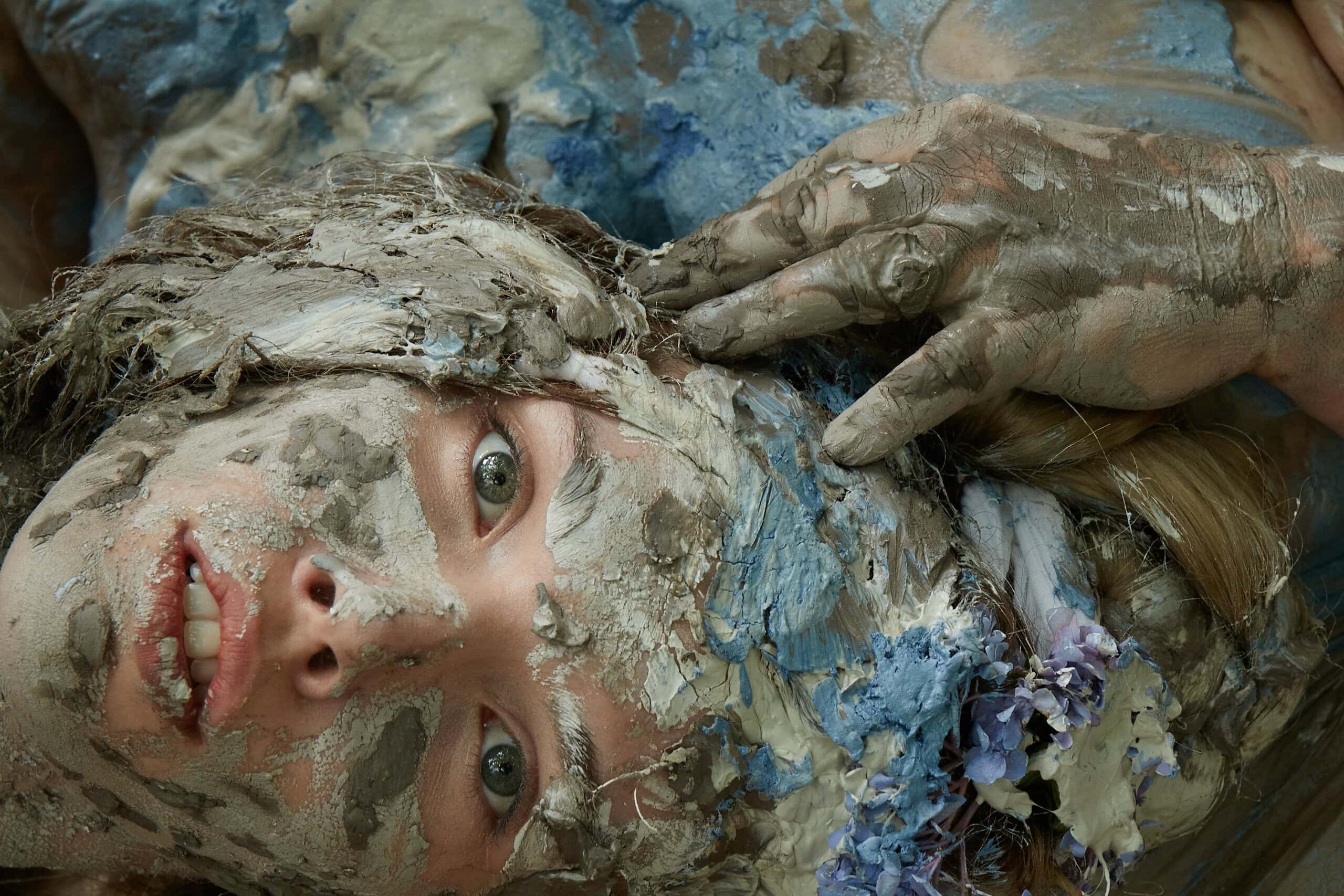
Among others, (e.g. Pandora) Brosch deliberately includes the snake-haired monster Medusa as an extended Gaia version, allowing Brosch to expose female deities that are commonly marginalized as terrifyingly powerful women.
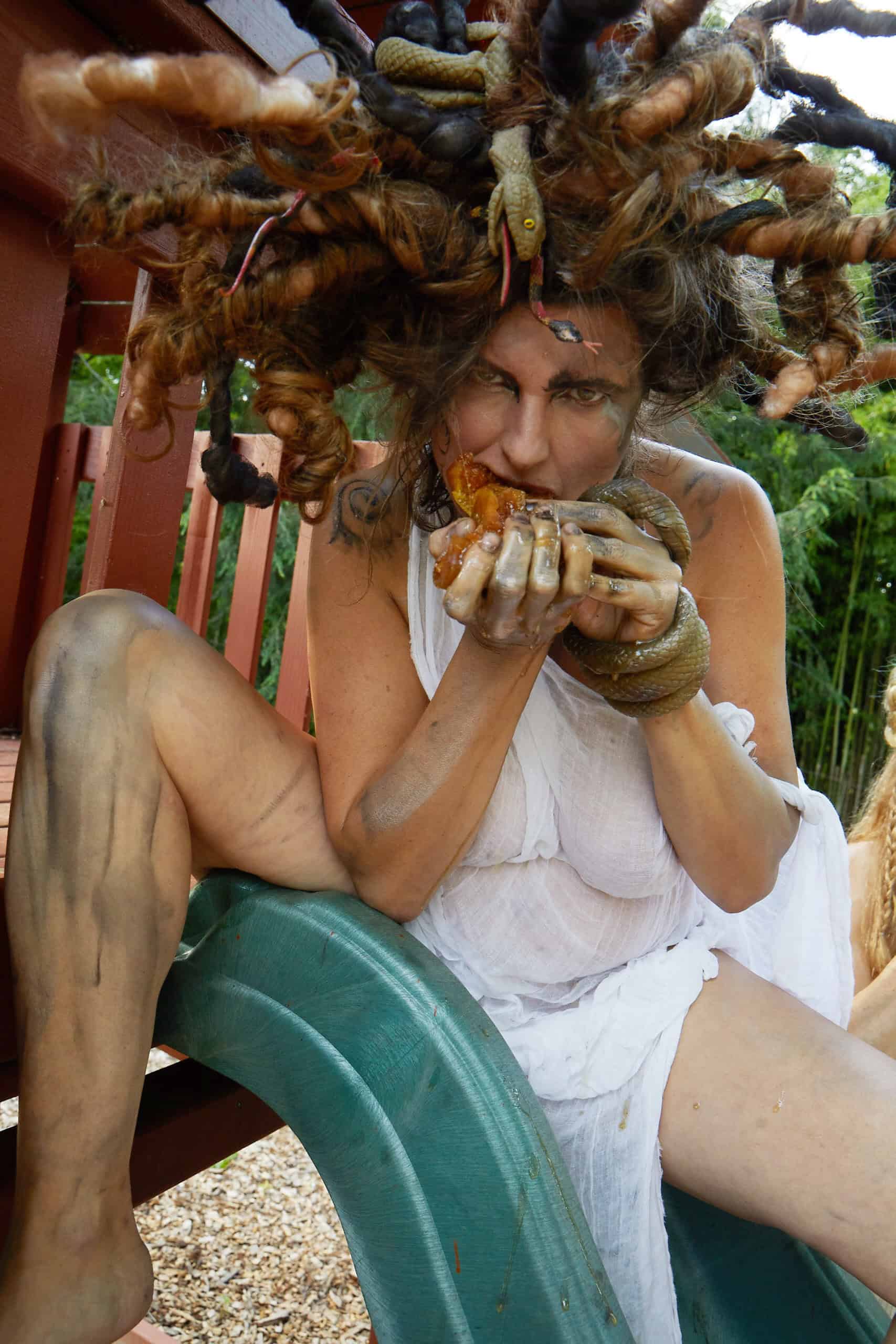
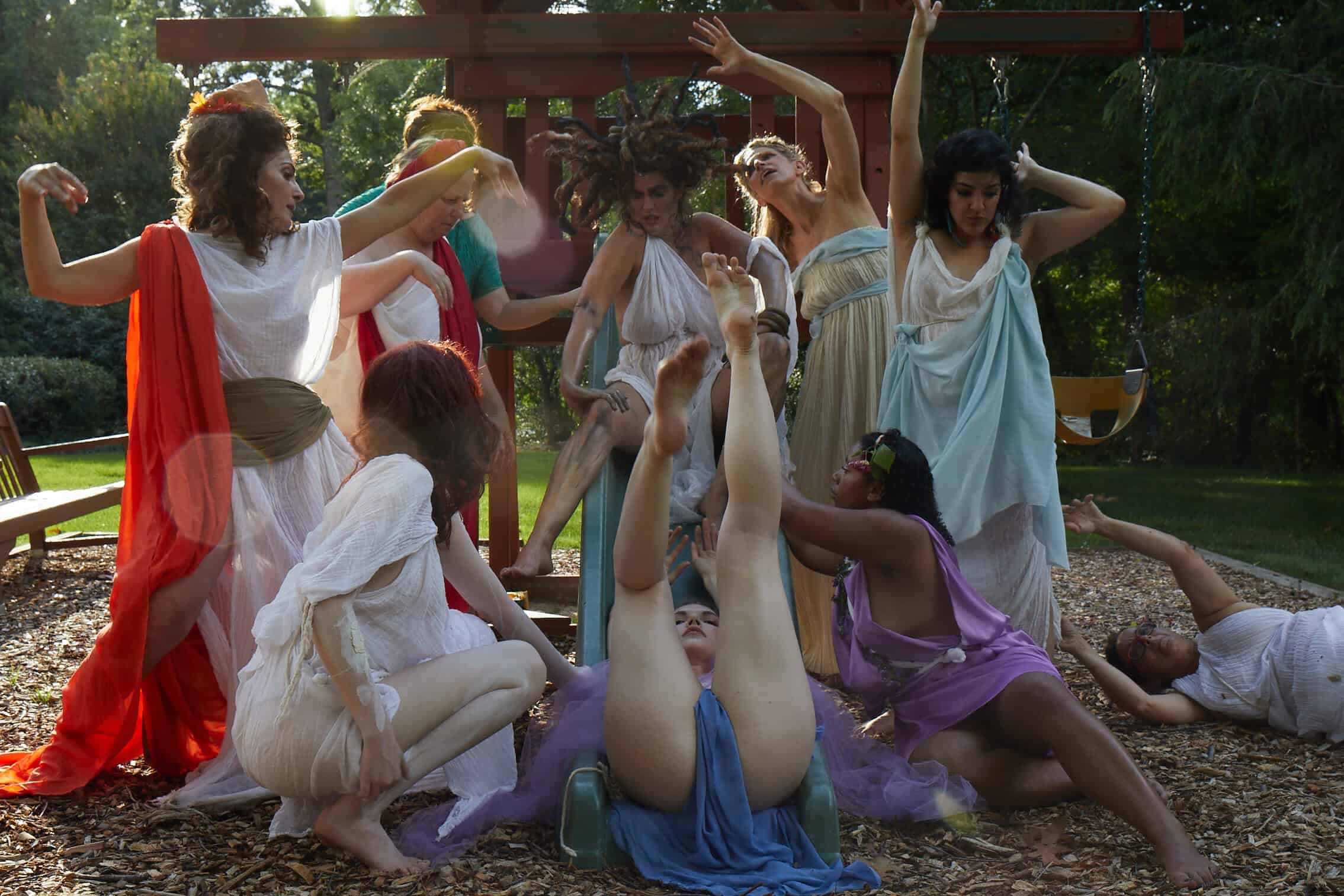
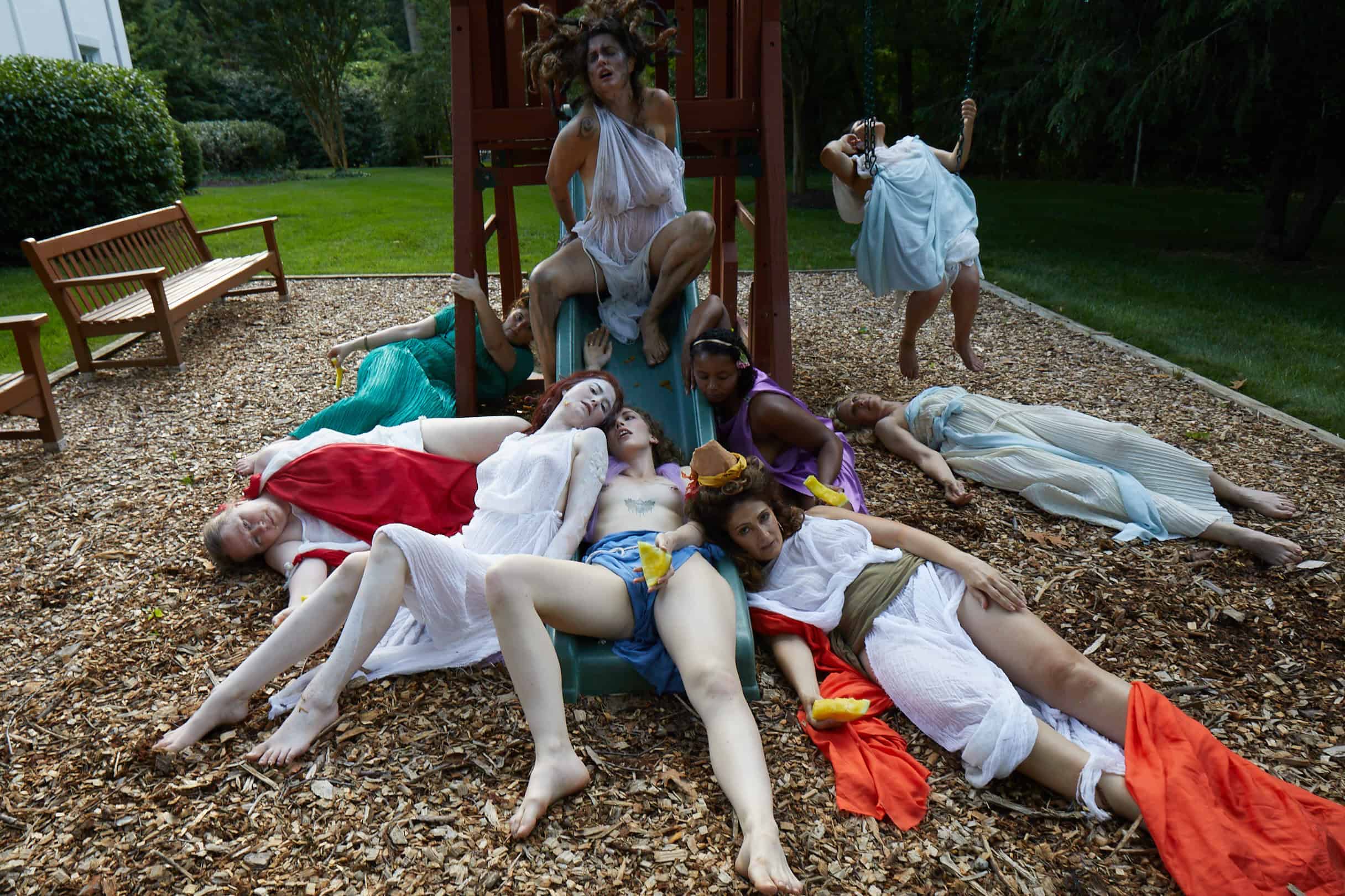
As an ongoing commitment, Iris Brosch reconnects empathically with Medusa and Pandora.
At the Center for Hellenic Studies in Washington DC, USA, she further continues a contemporary cycle and re-interpretation of Gaia and/with her living earthbound fellow counterparts. With caress and great sense for collaborative practice during her experimental performance, Iris Brosch gives women back their dignity and grandeur. Playful, shrill, loud, and with flamboyant references, opulent imagery of “ugly beauty” and wildly intertwining gesticulations merge into one body; a snake-like entity of enragement-provoking norms and laws of a culture wherein women are traded as commodities between men and rape is permissible by law.
Untying the misogynist iconography, refusing conform gender roles, unmuting female authority in the long history of women’s oppression by fusing compassion, sisterhood, female physical presence, and propagated self-image, Iris Brosch is on a mission to detect profound mythological deities re-emerging and re-interpreted in the 21st century. As Iris Brosch re-defines “the female body is a tool of power and women should not be afraid of their powers.”
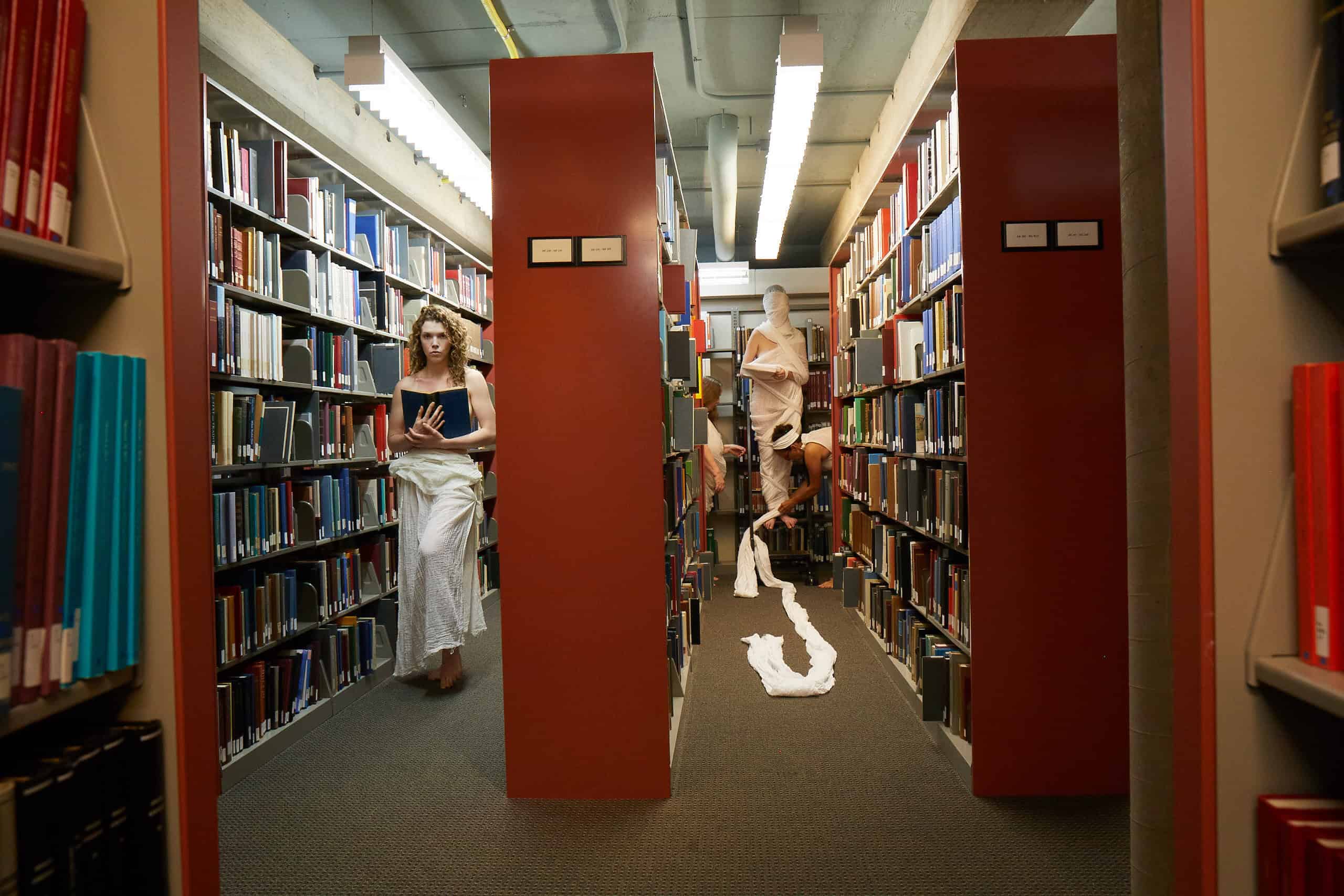
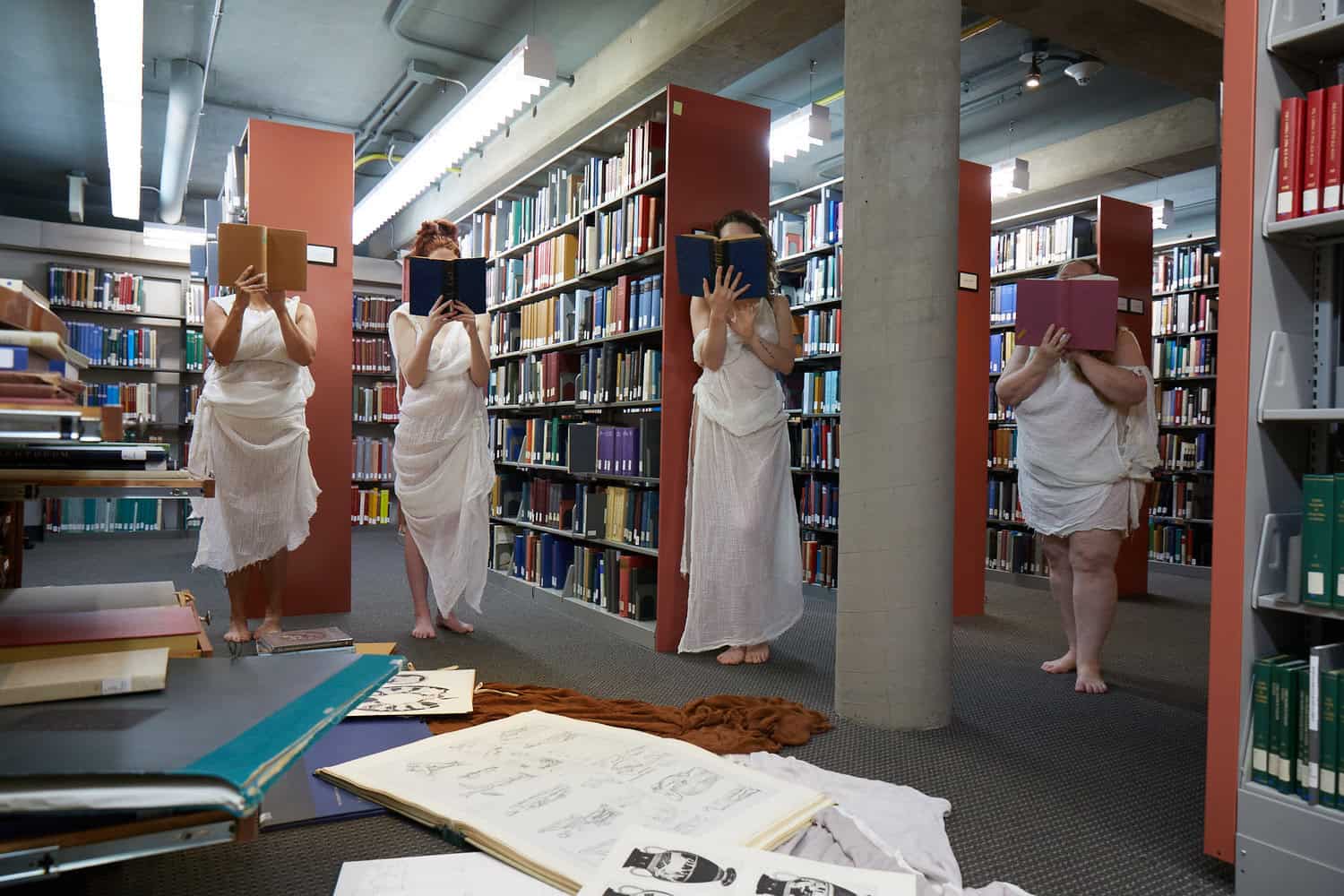
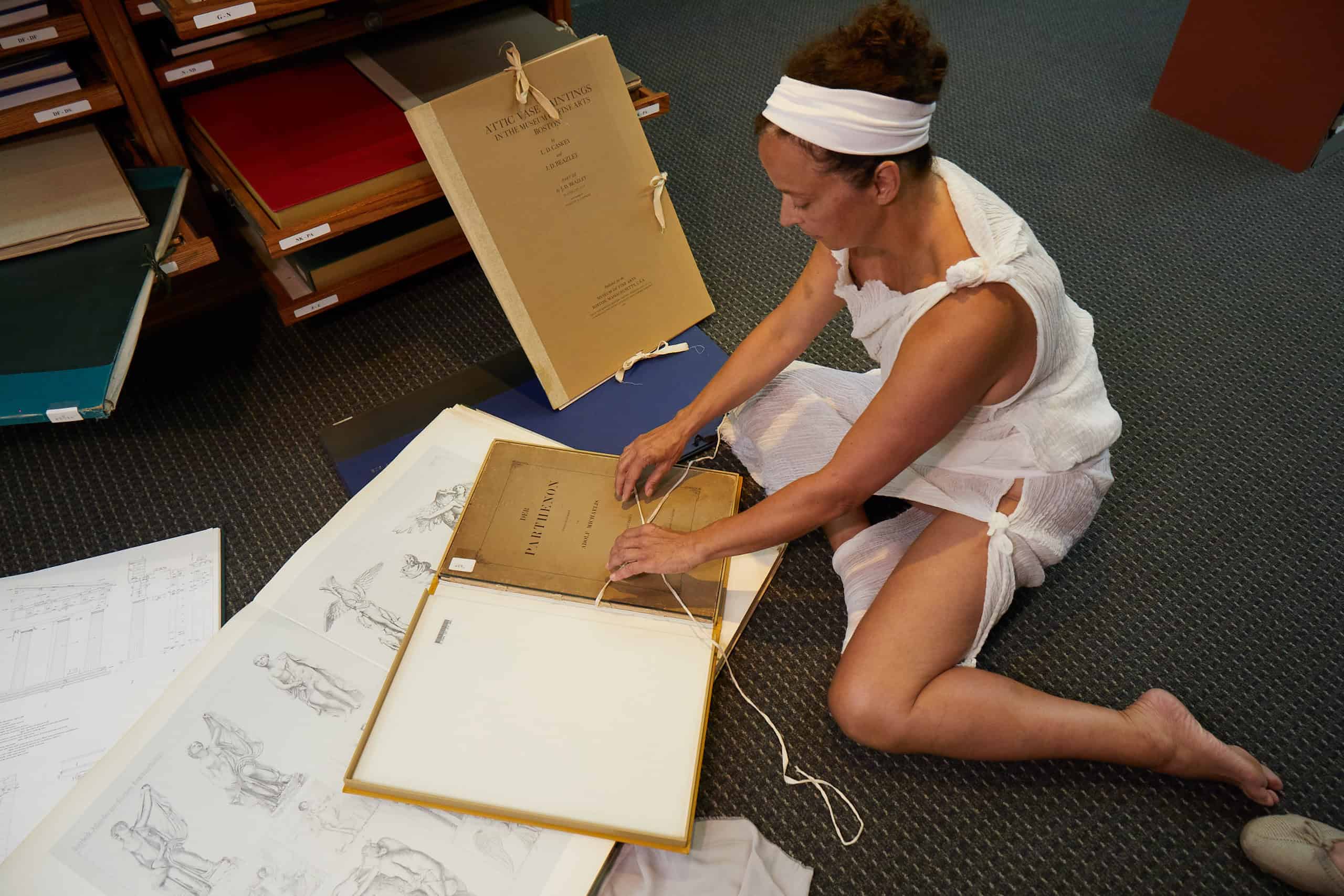
Learn more:
Share this post

